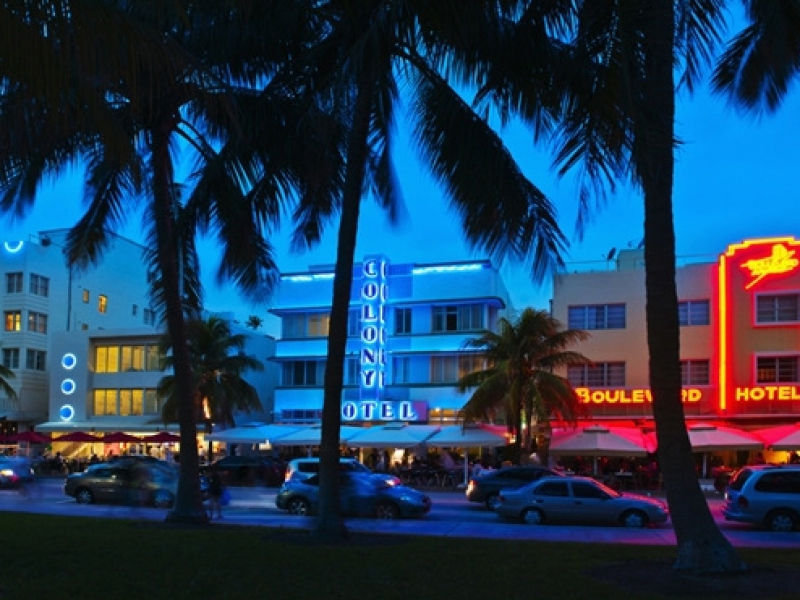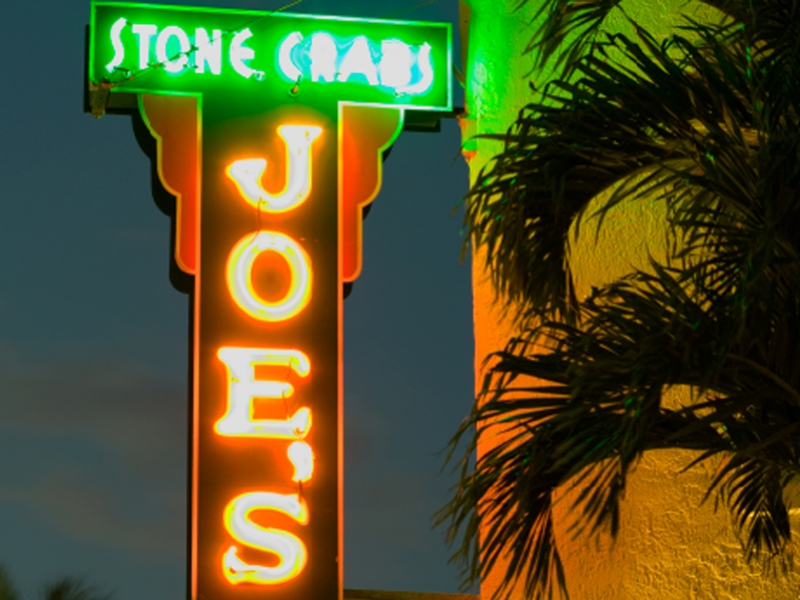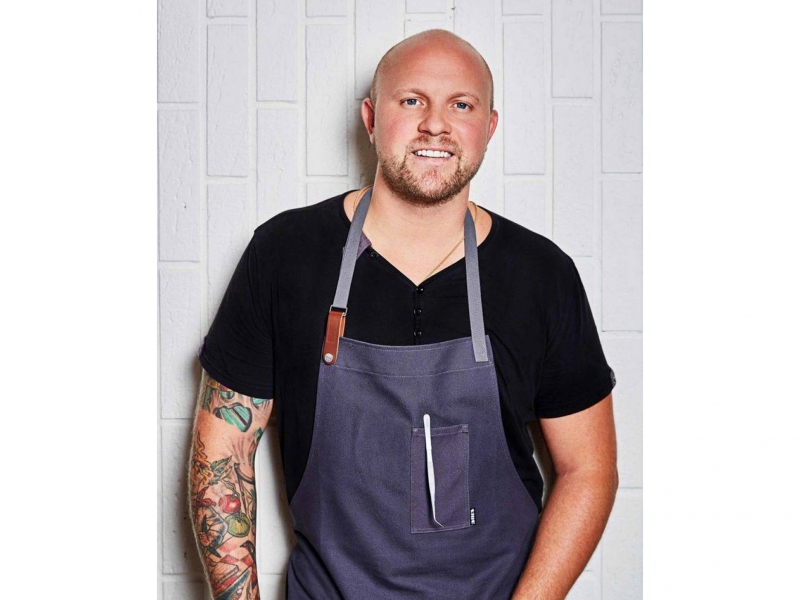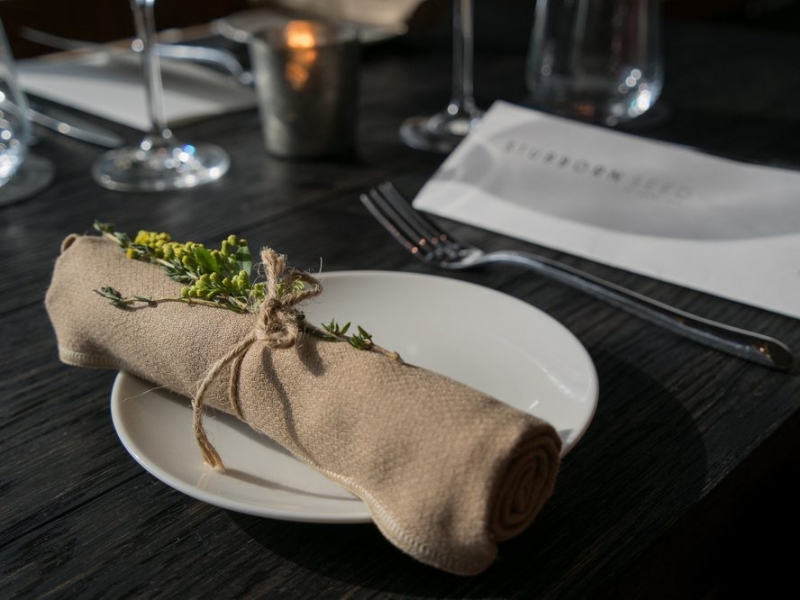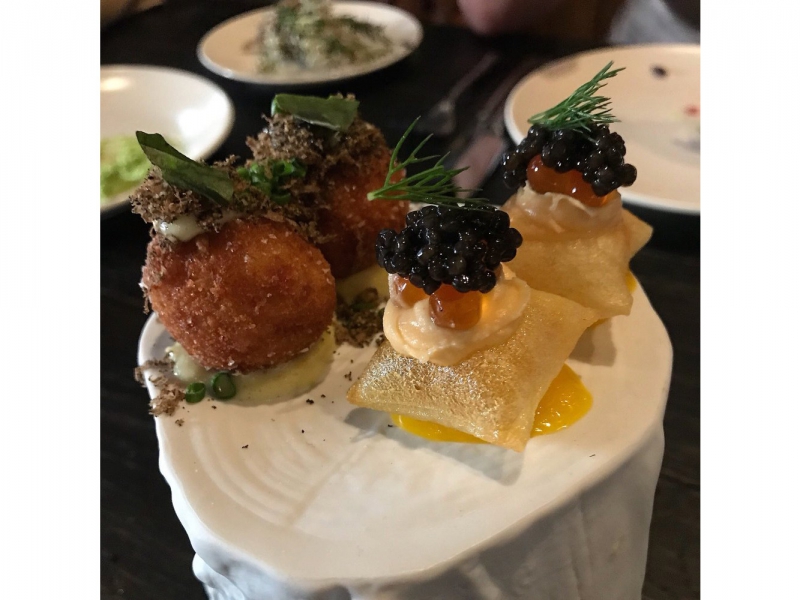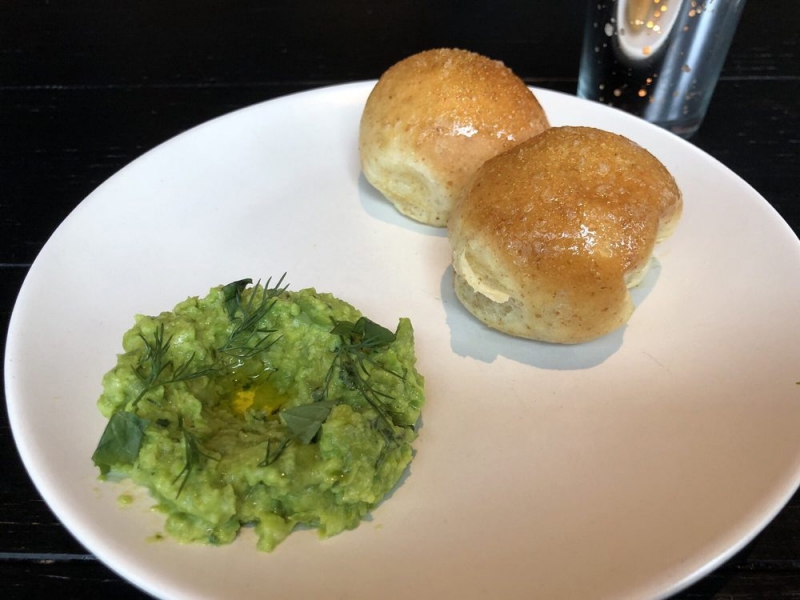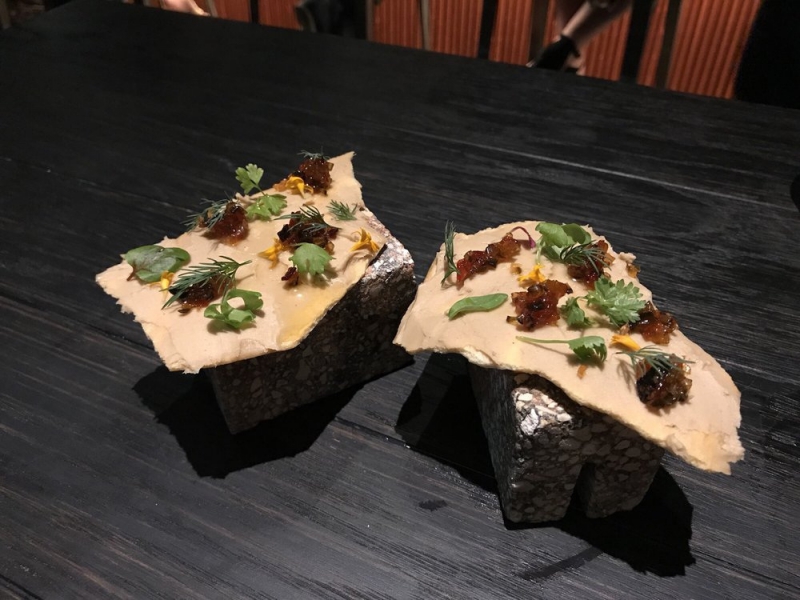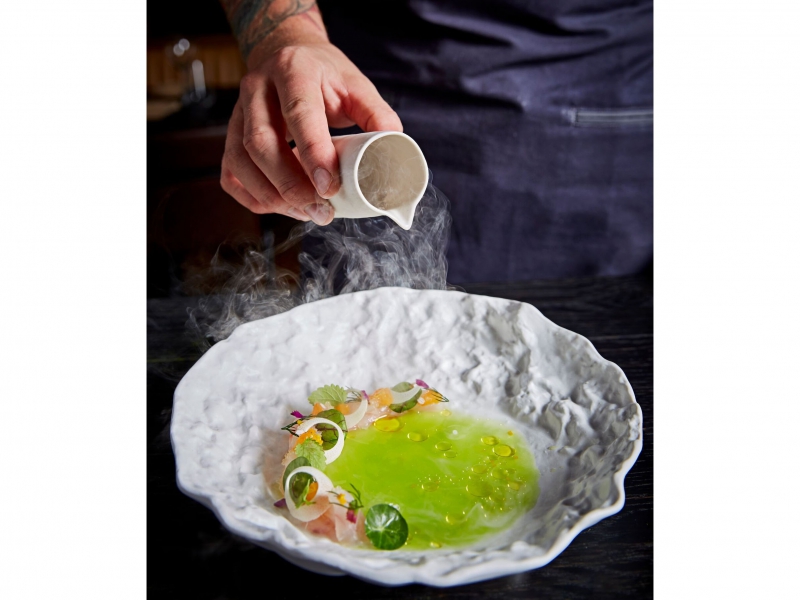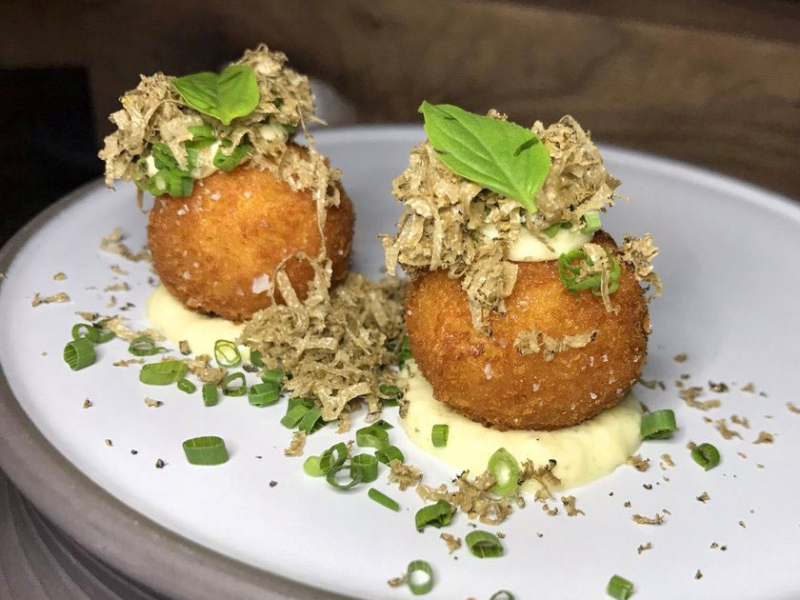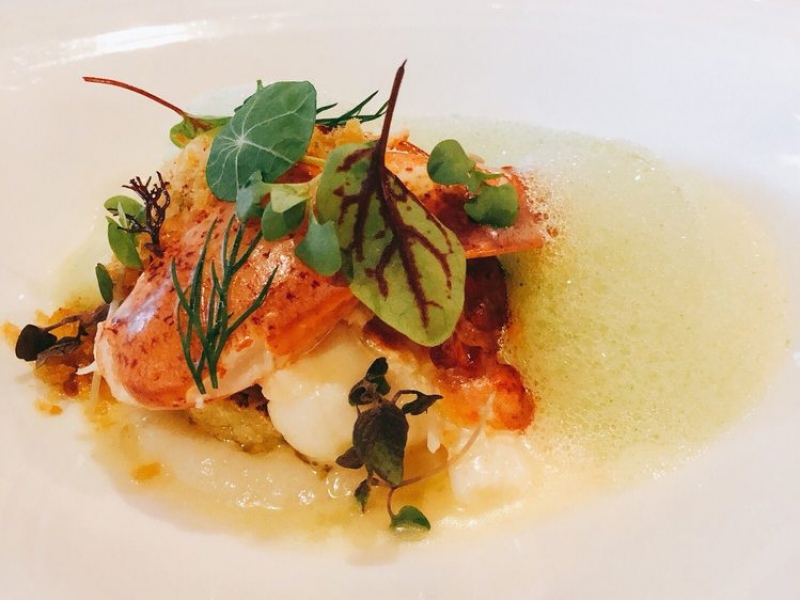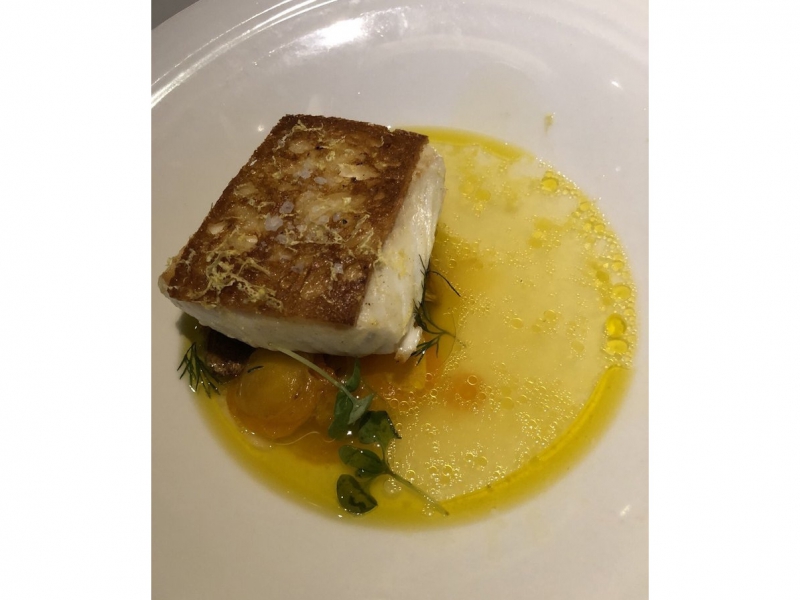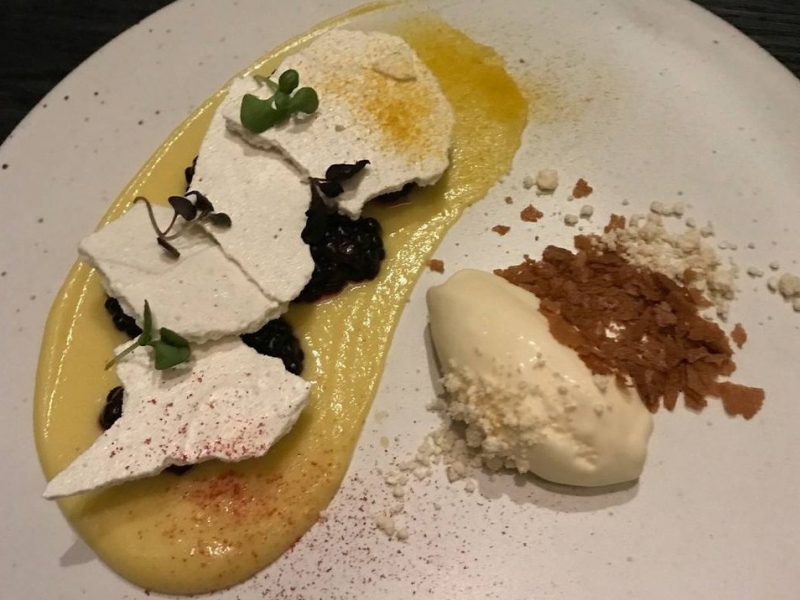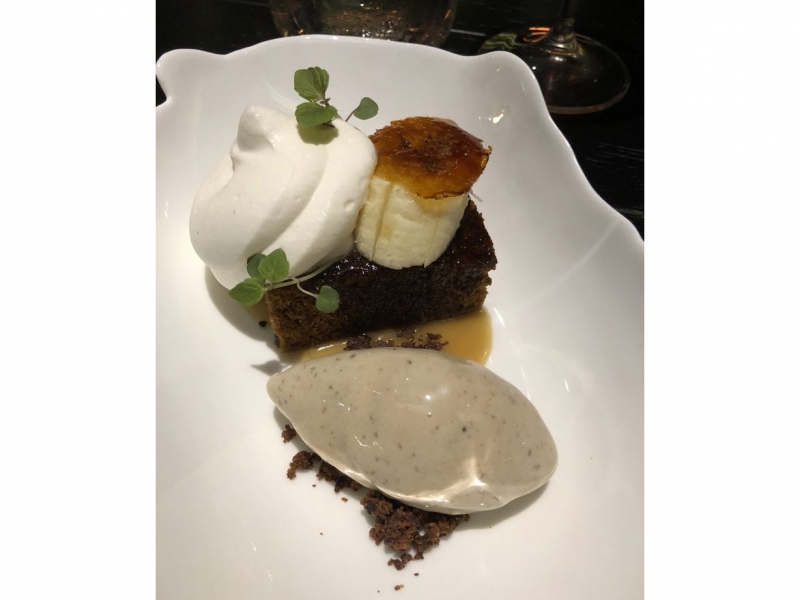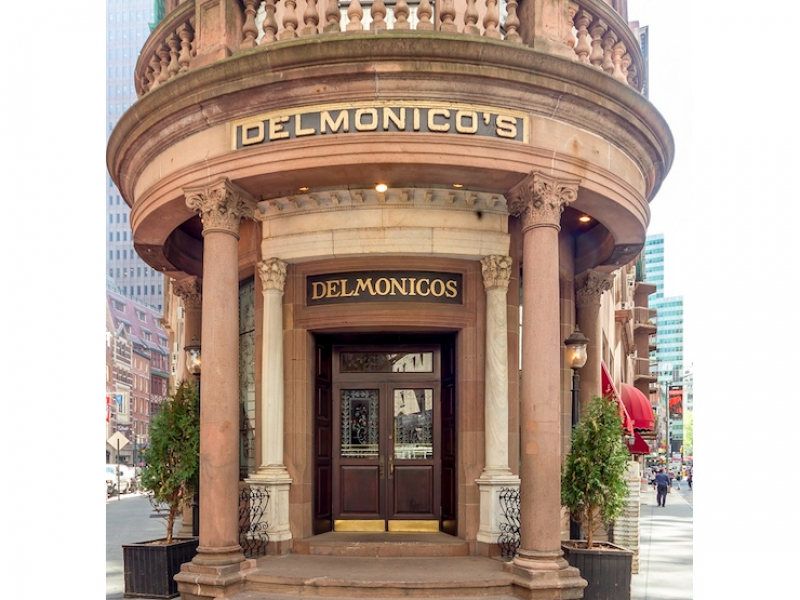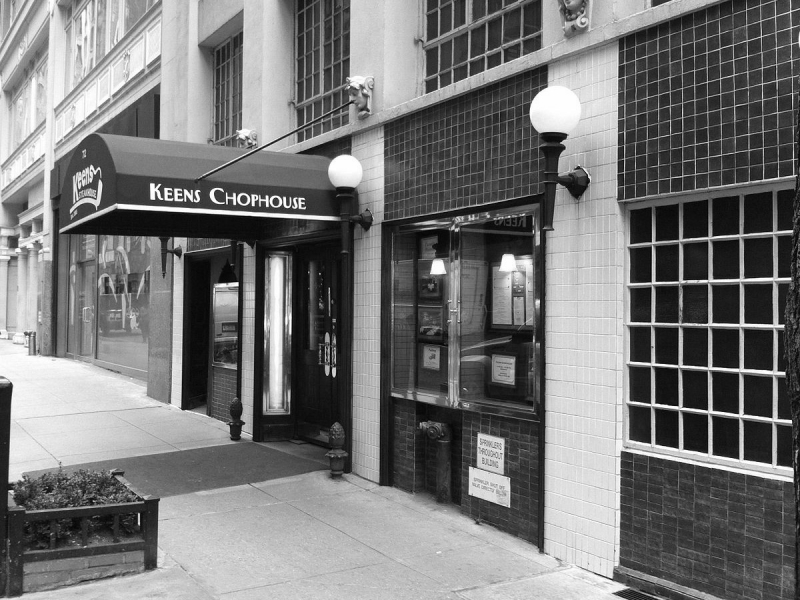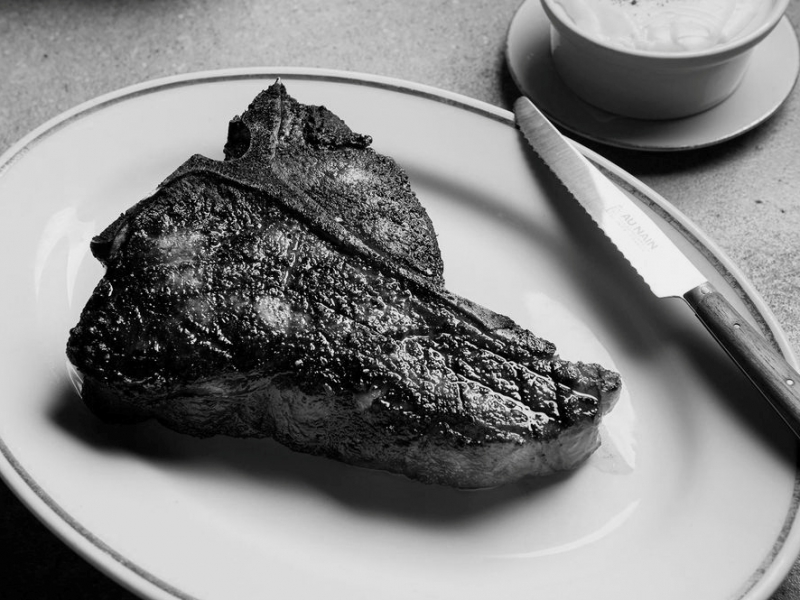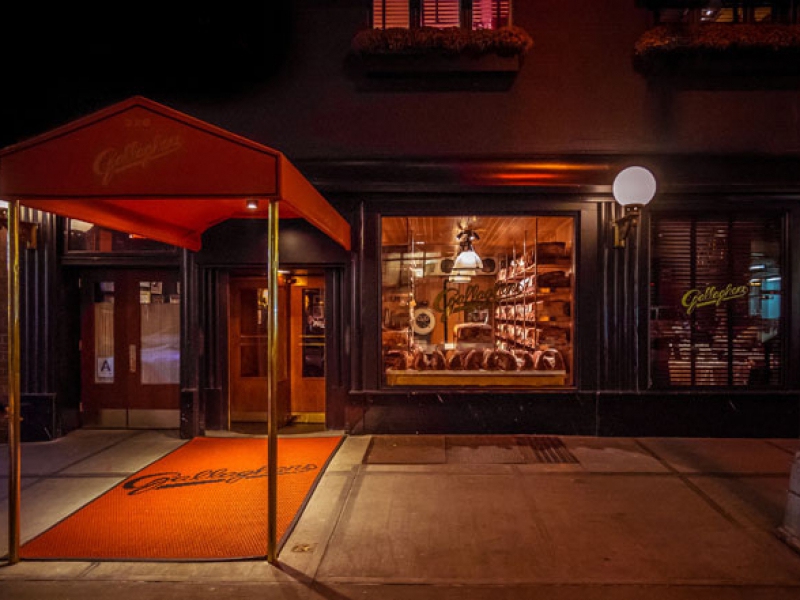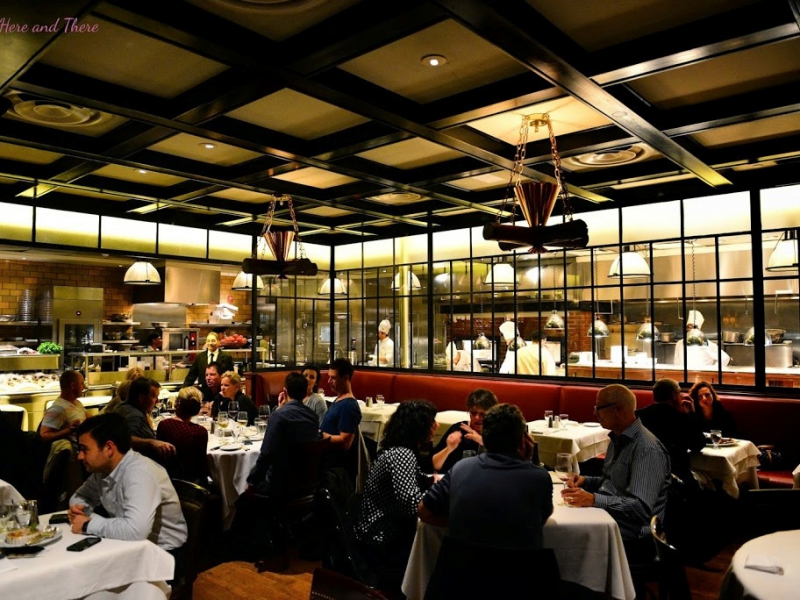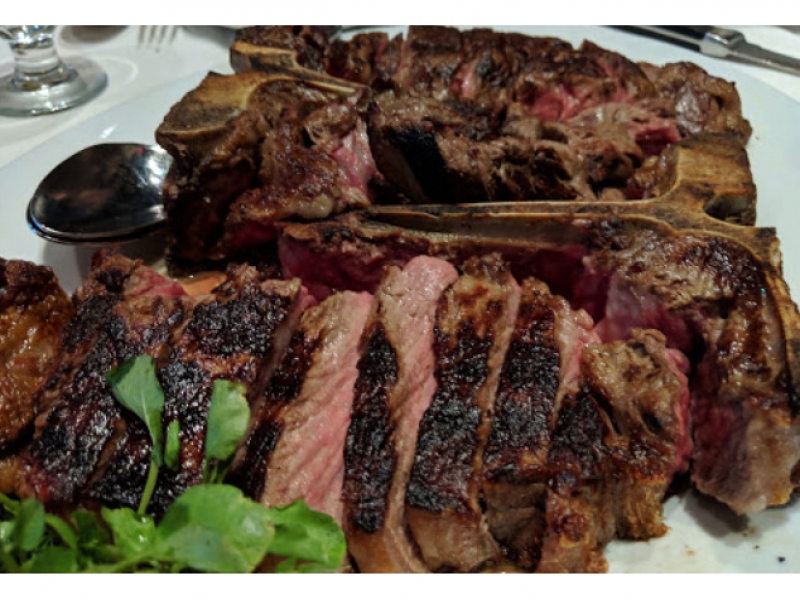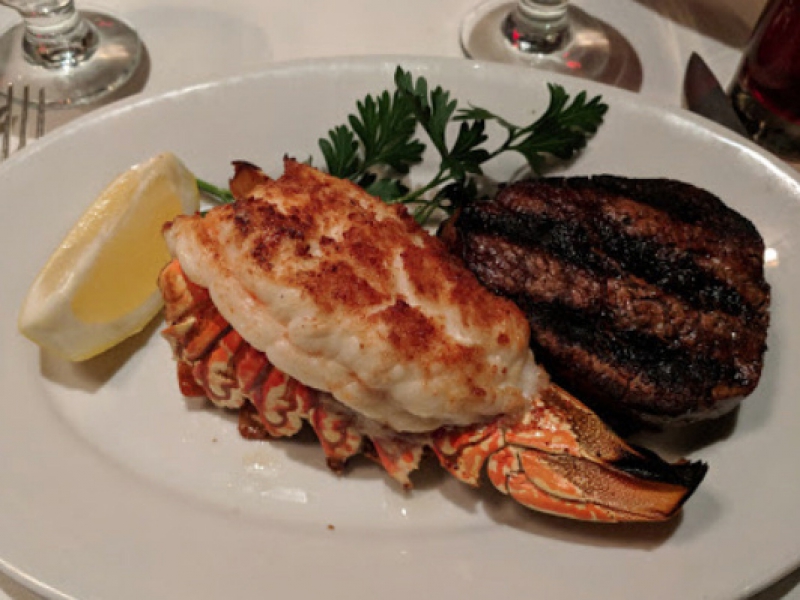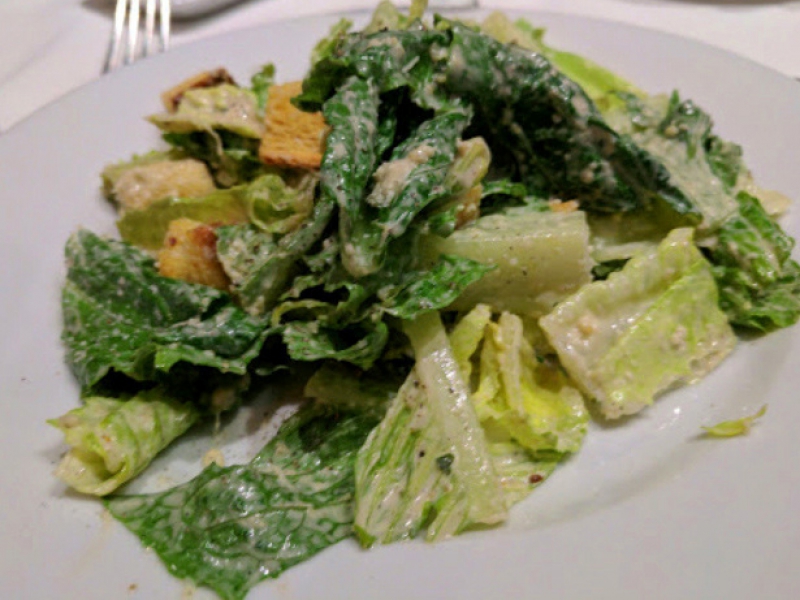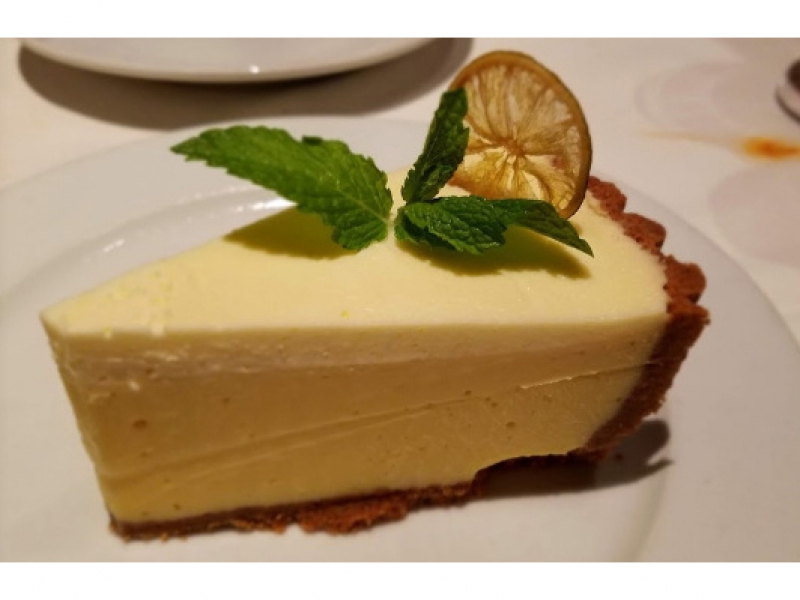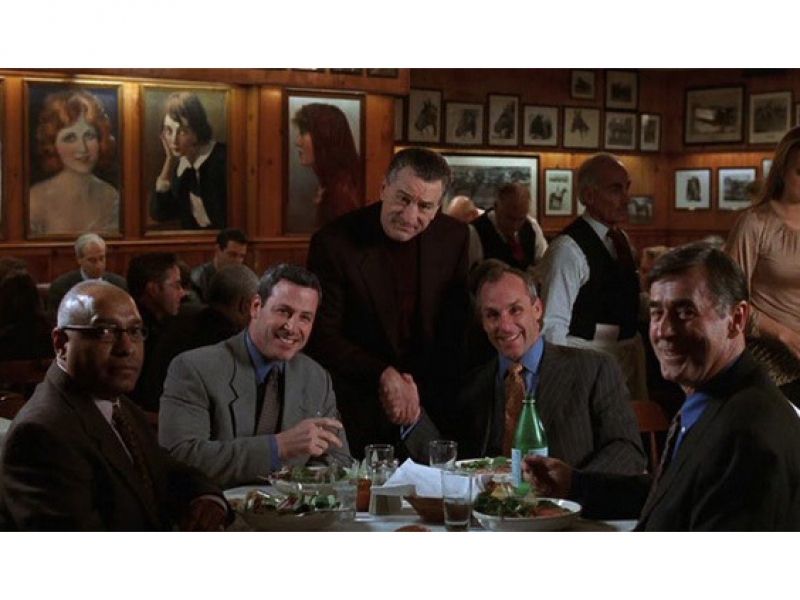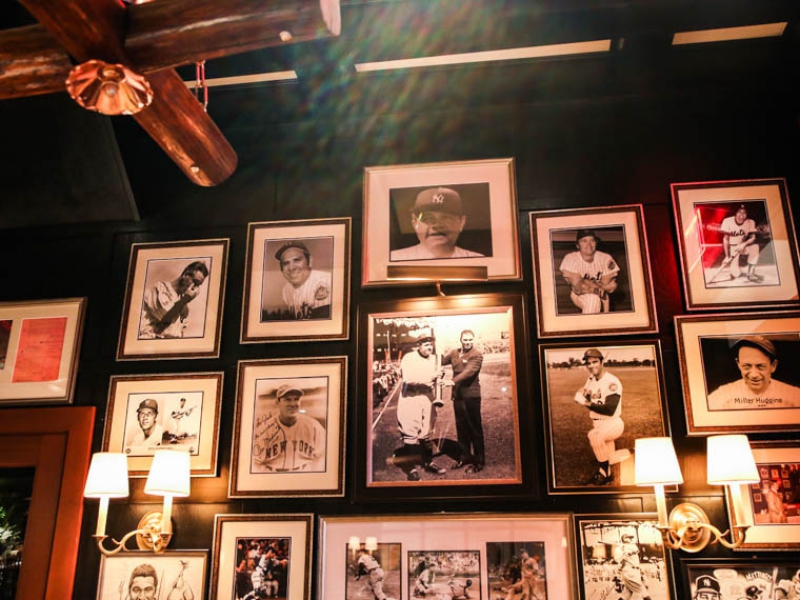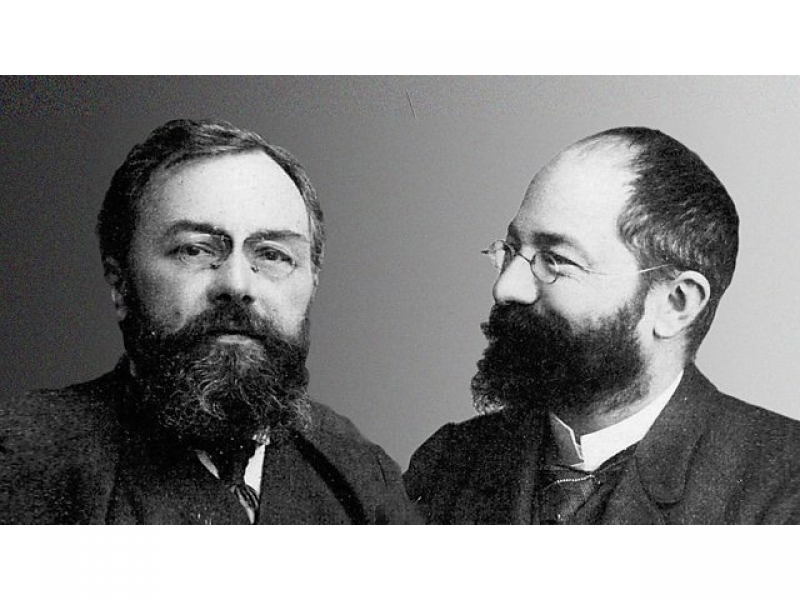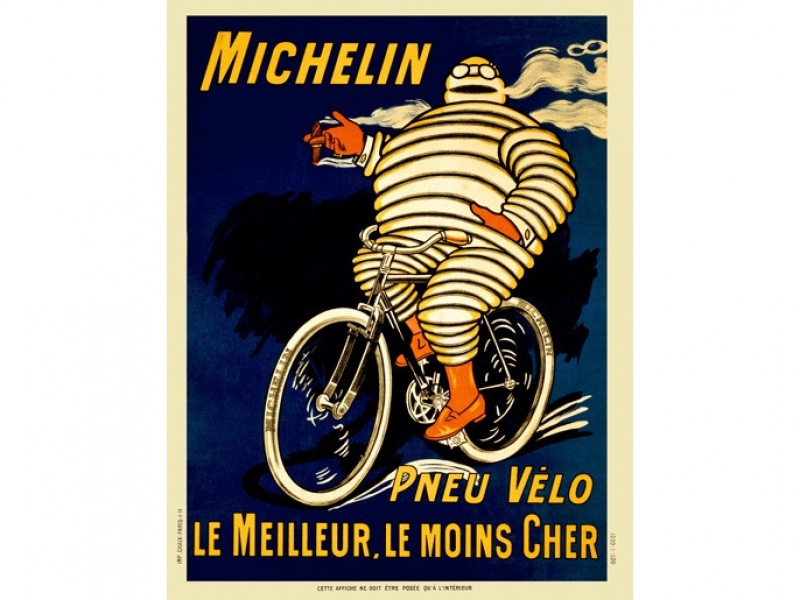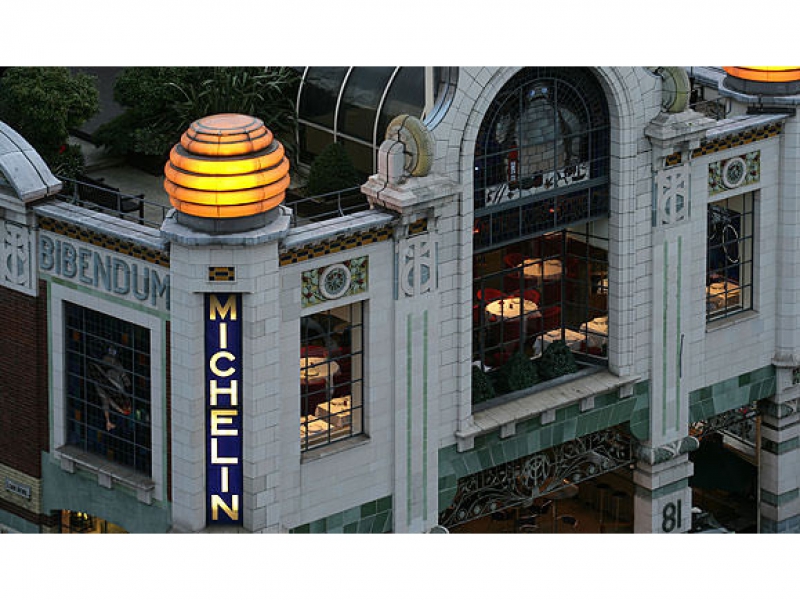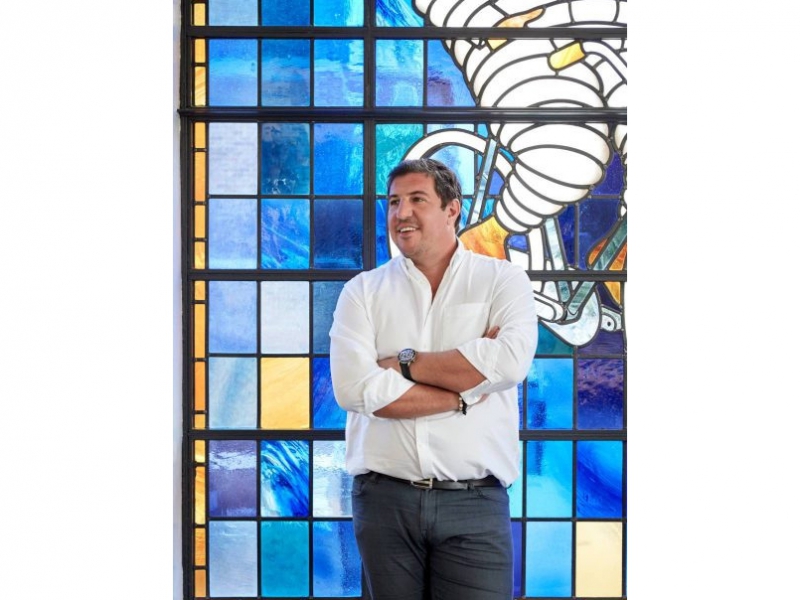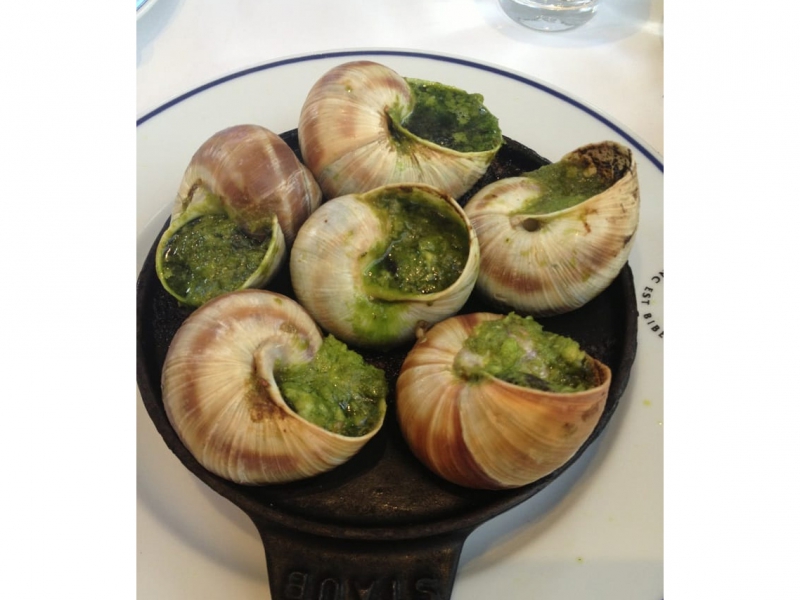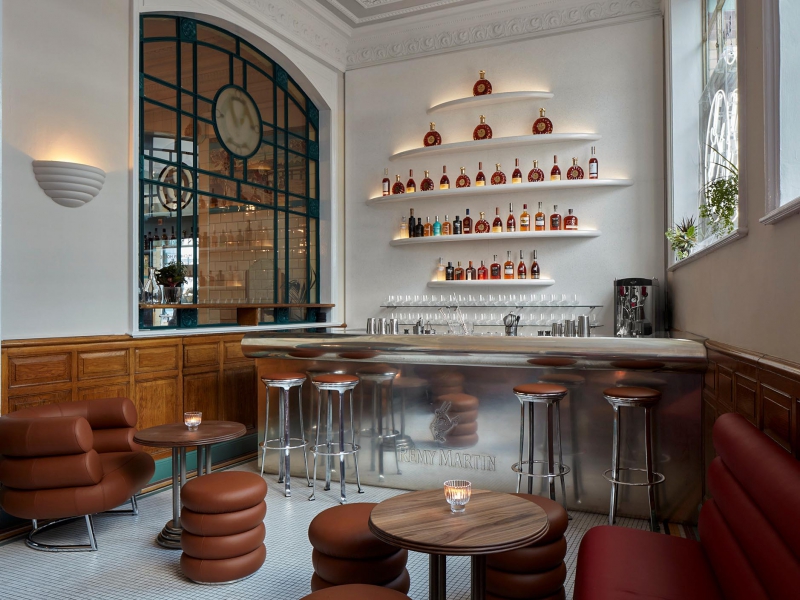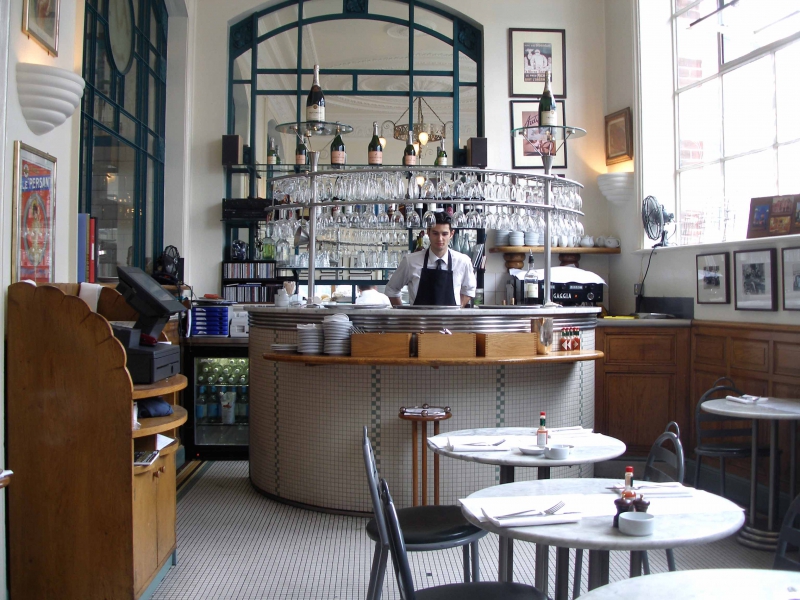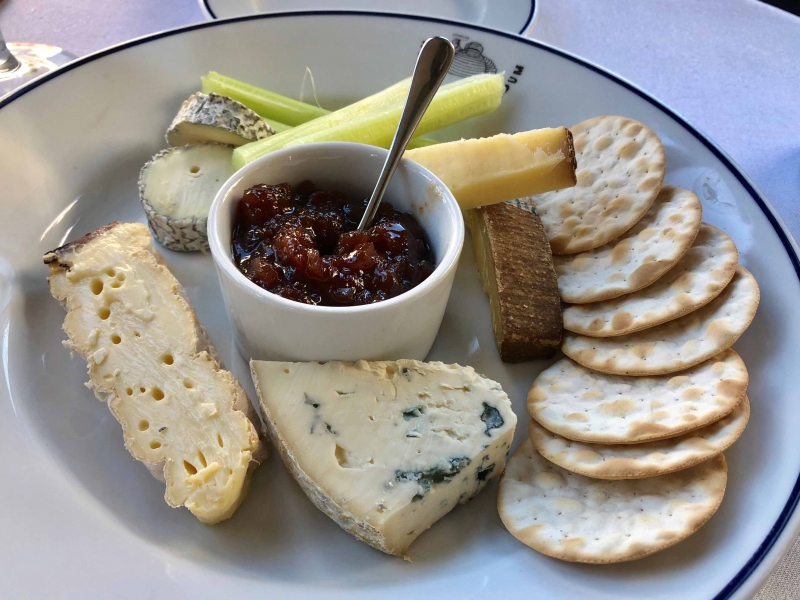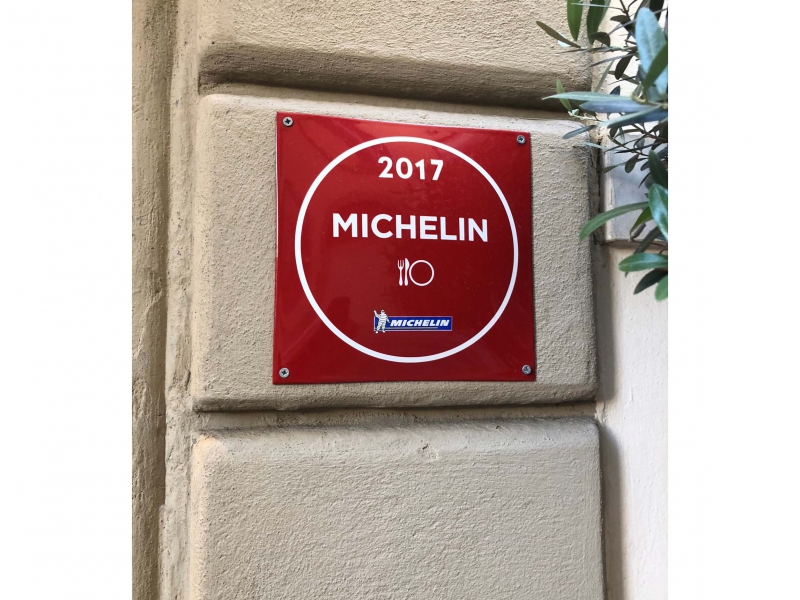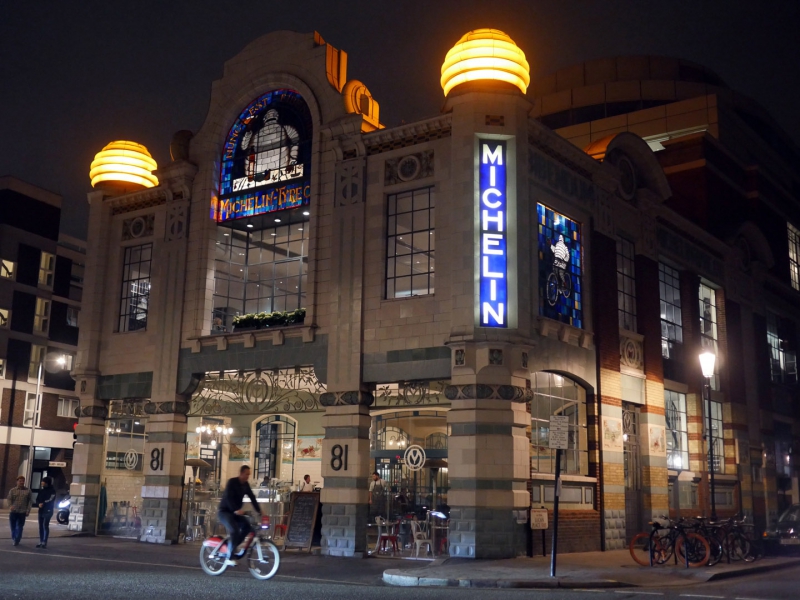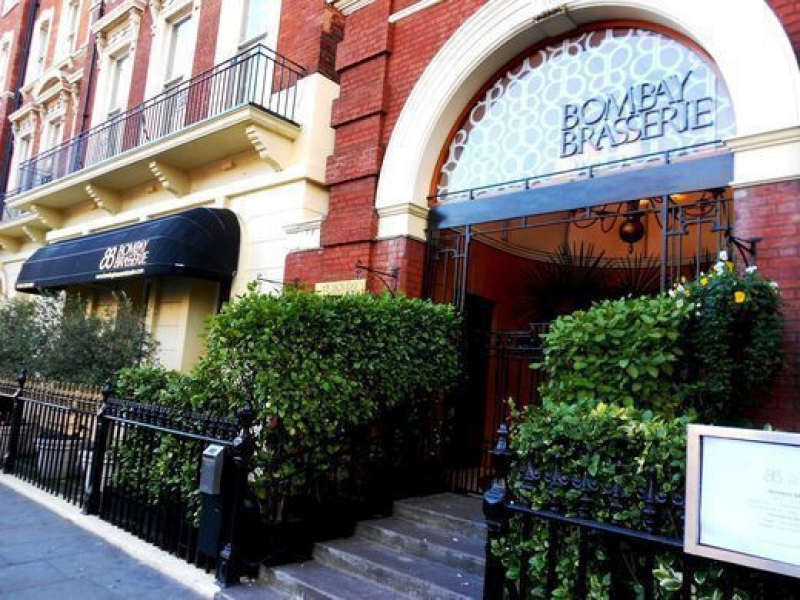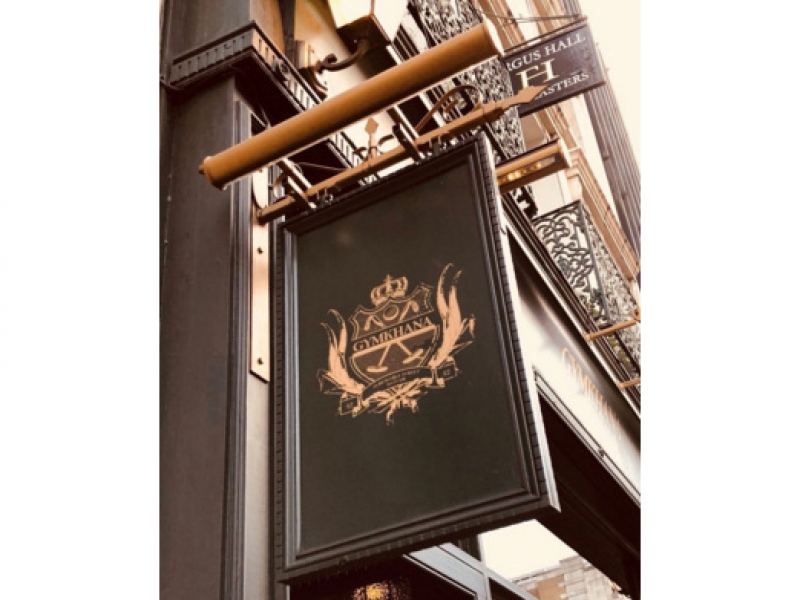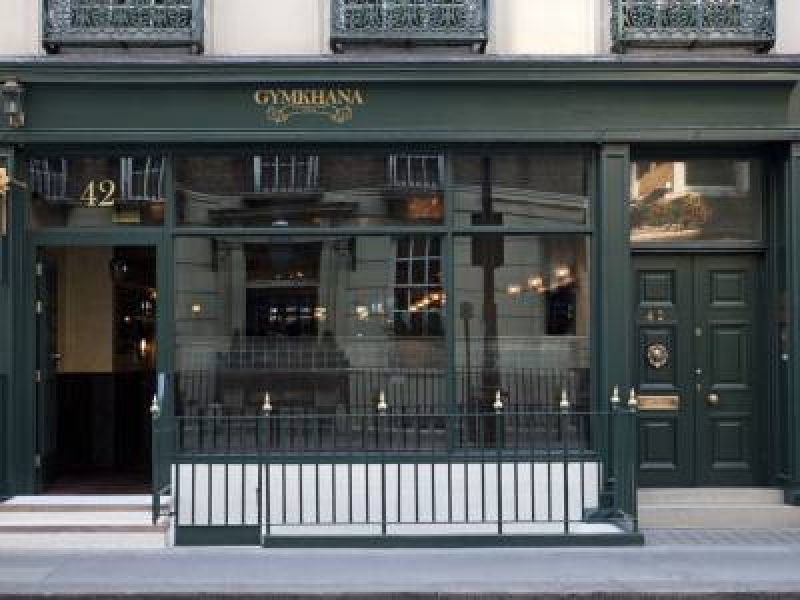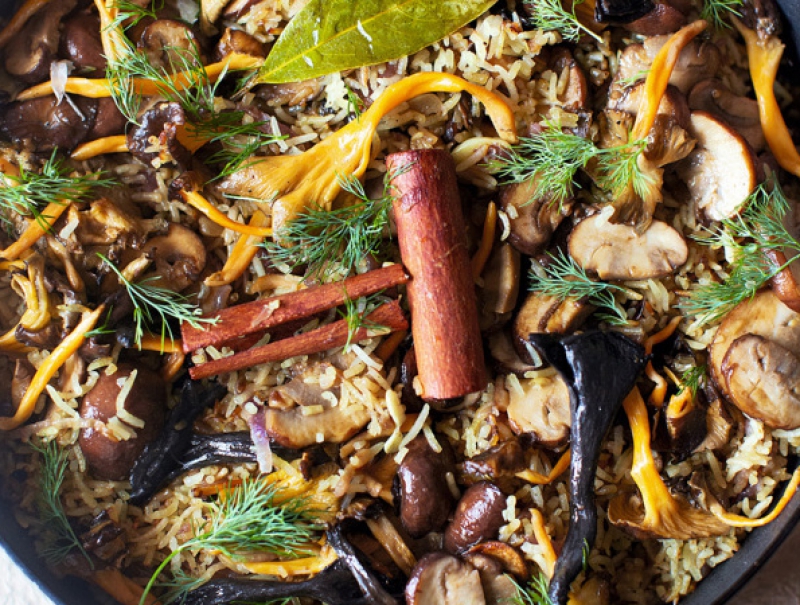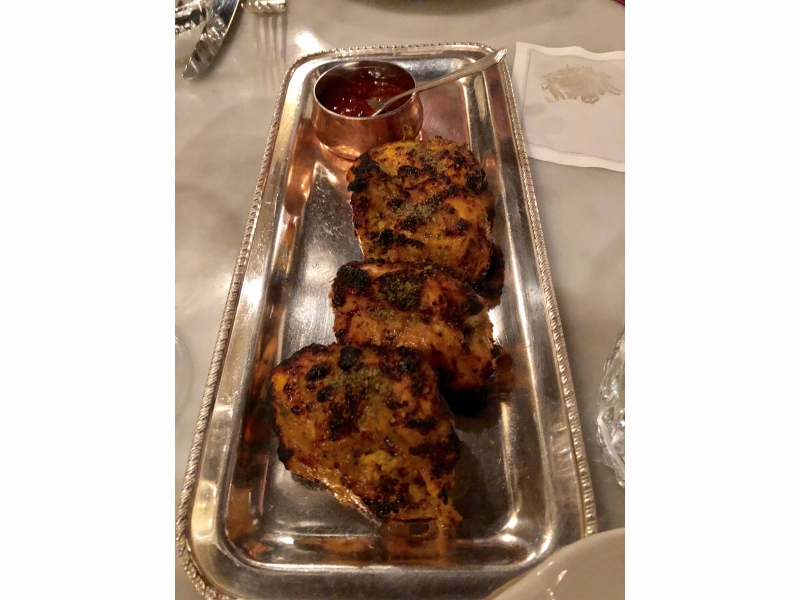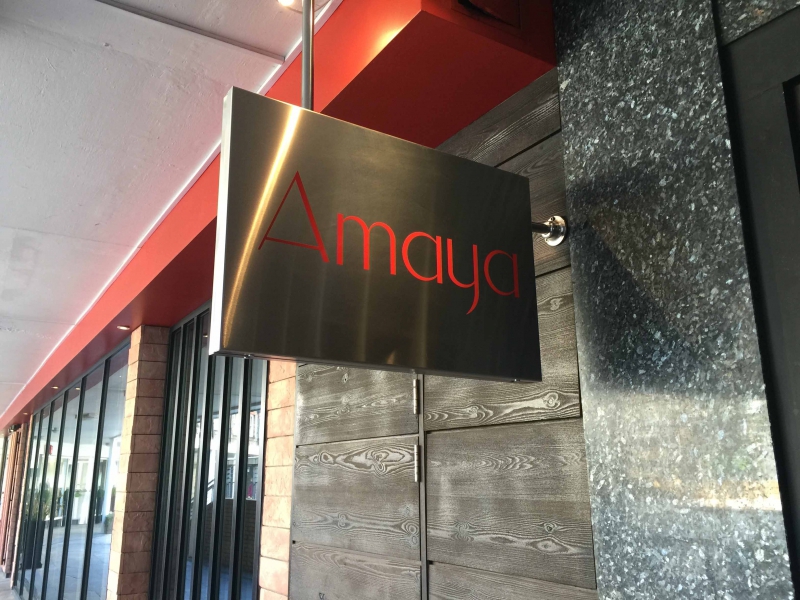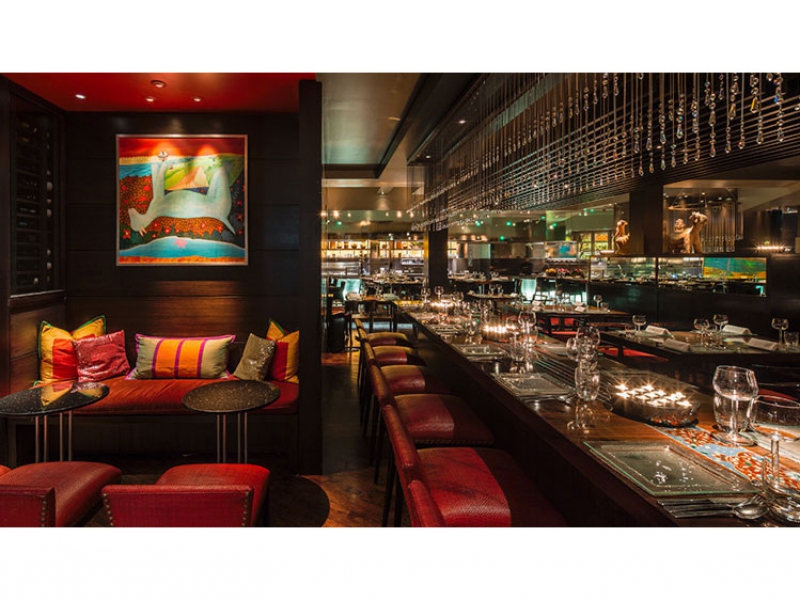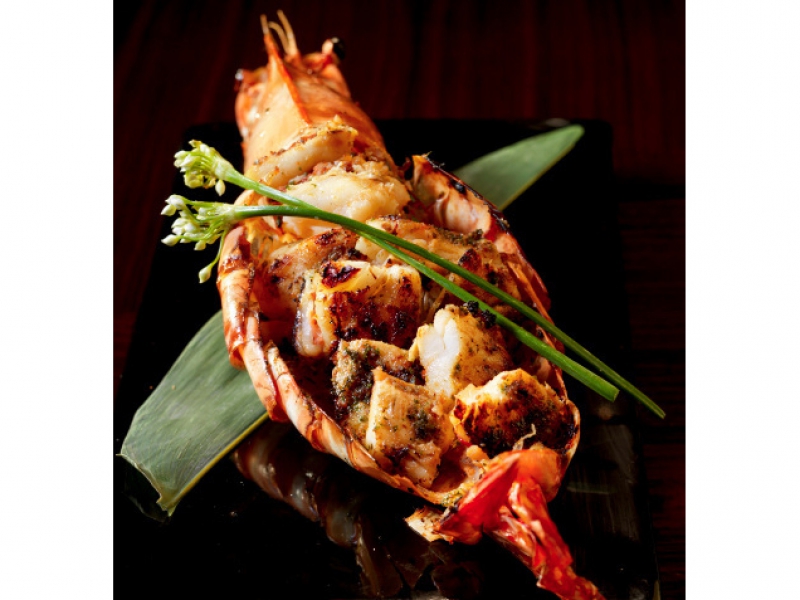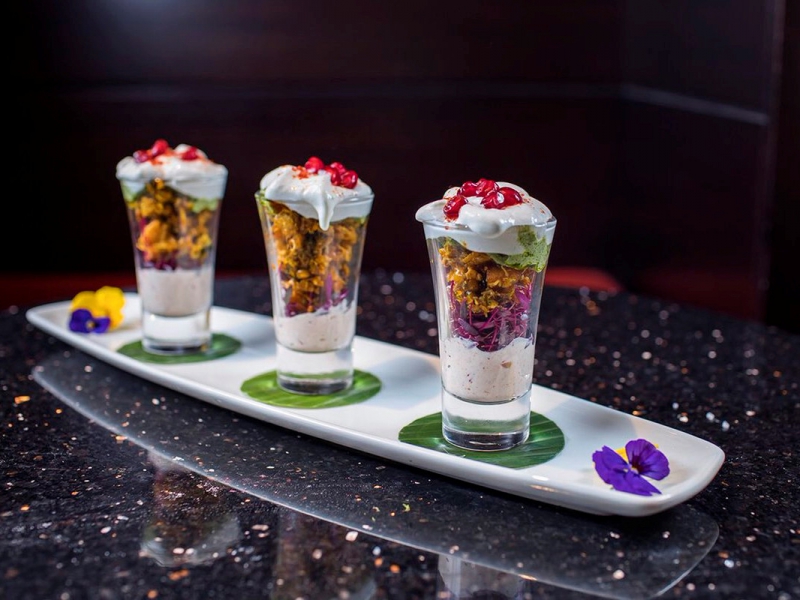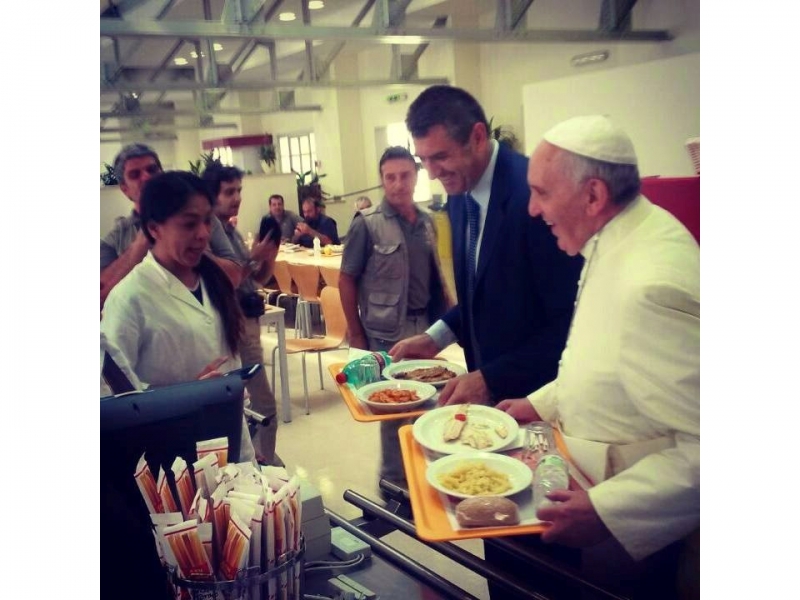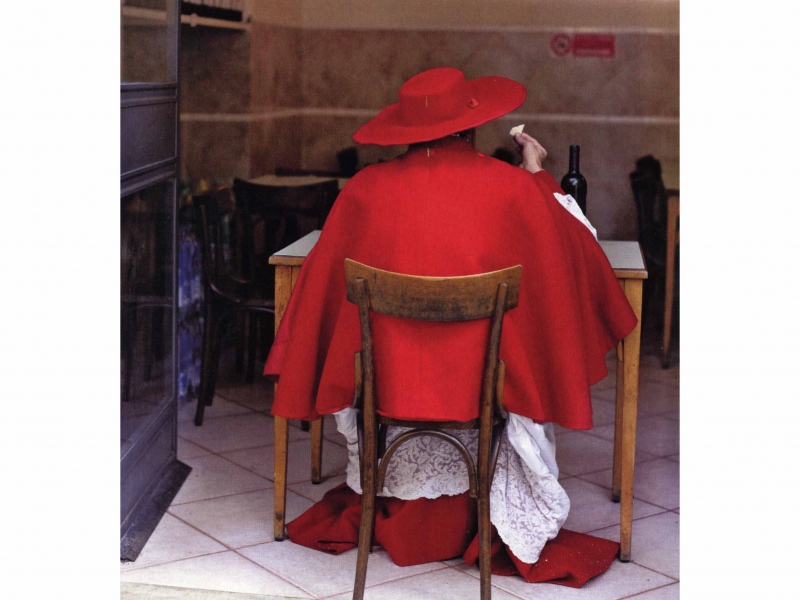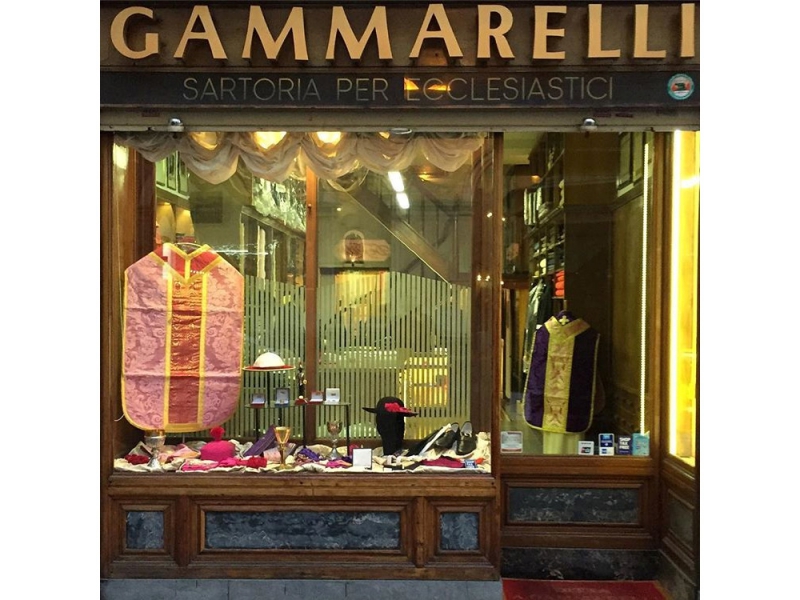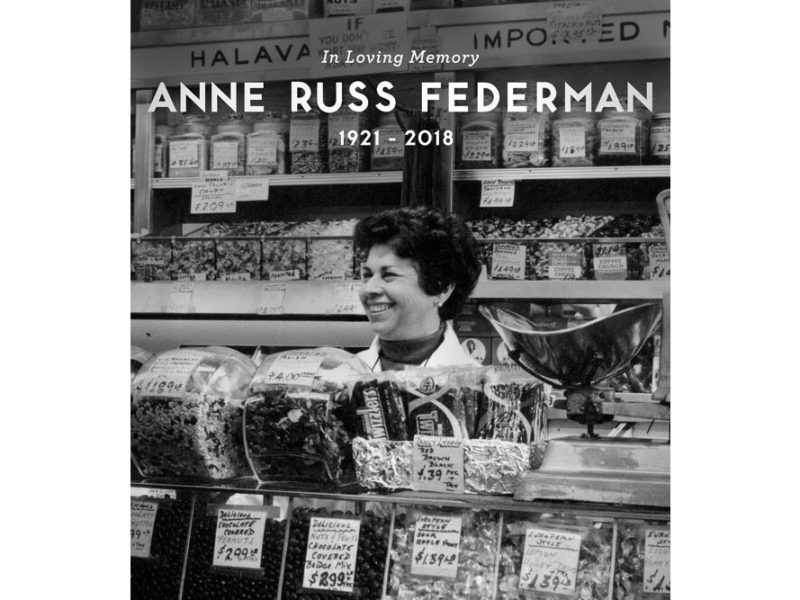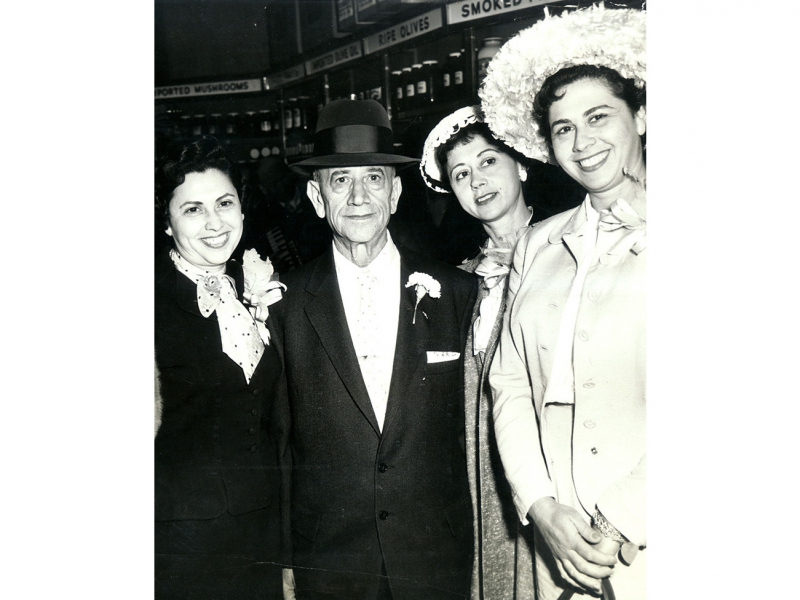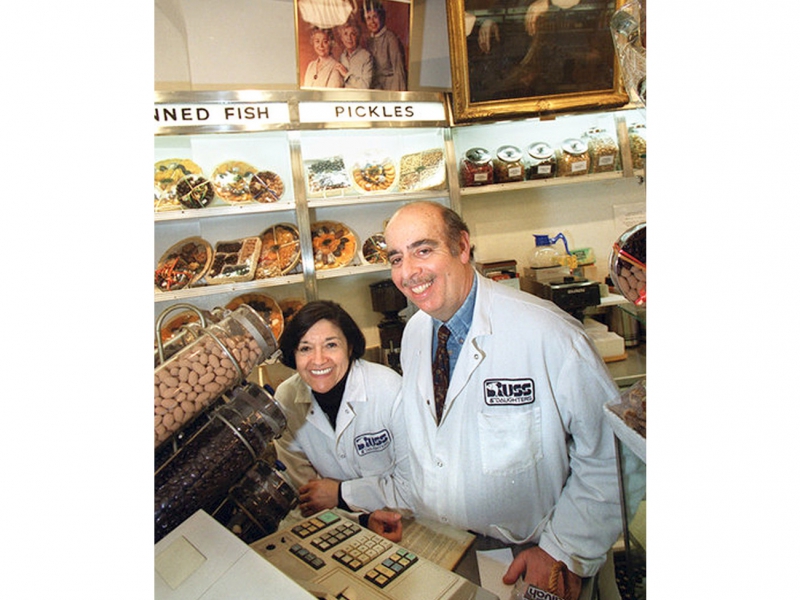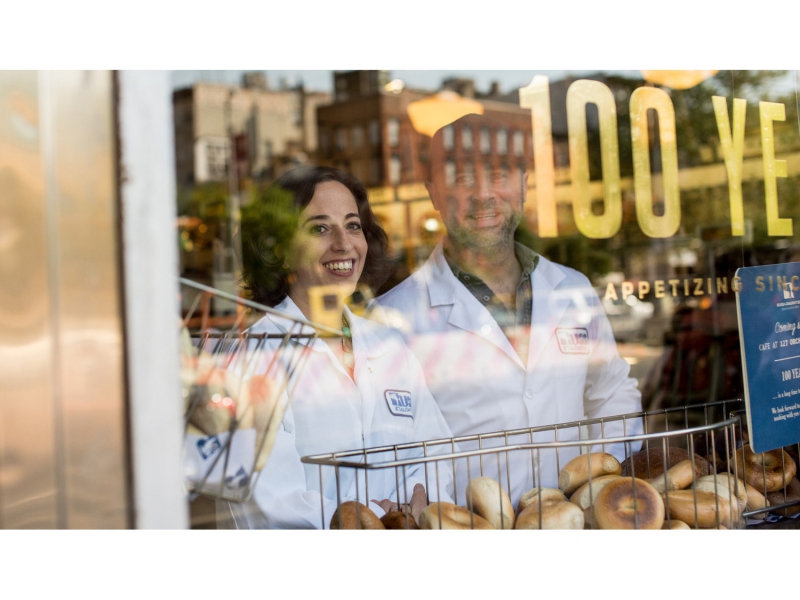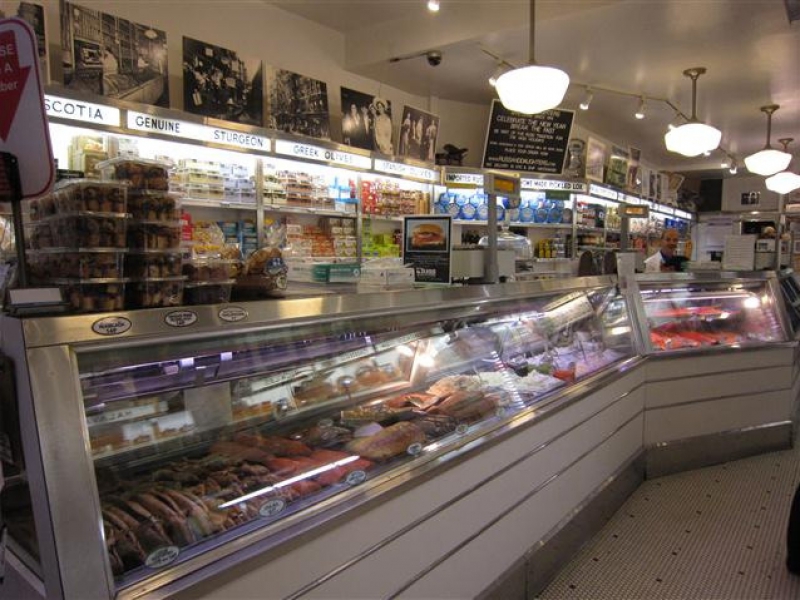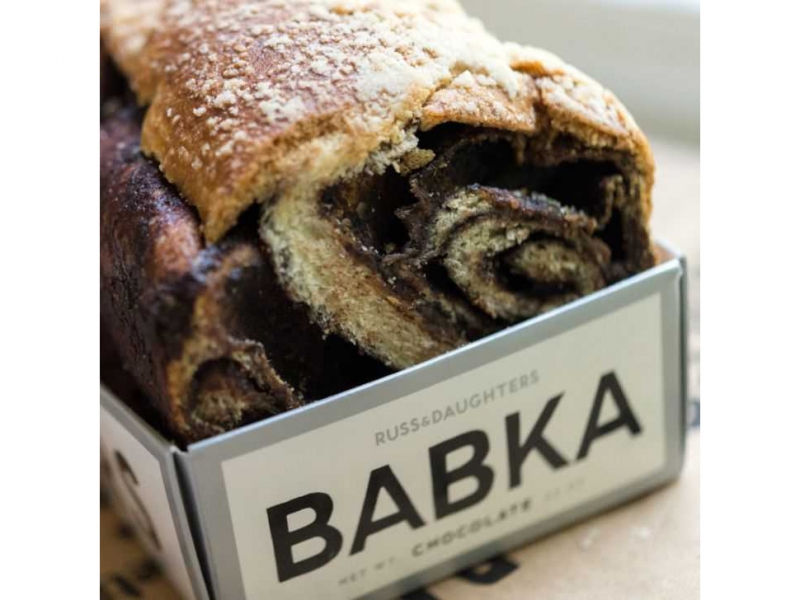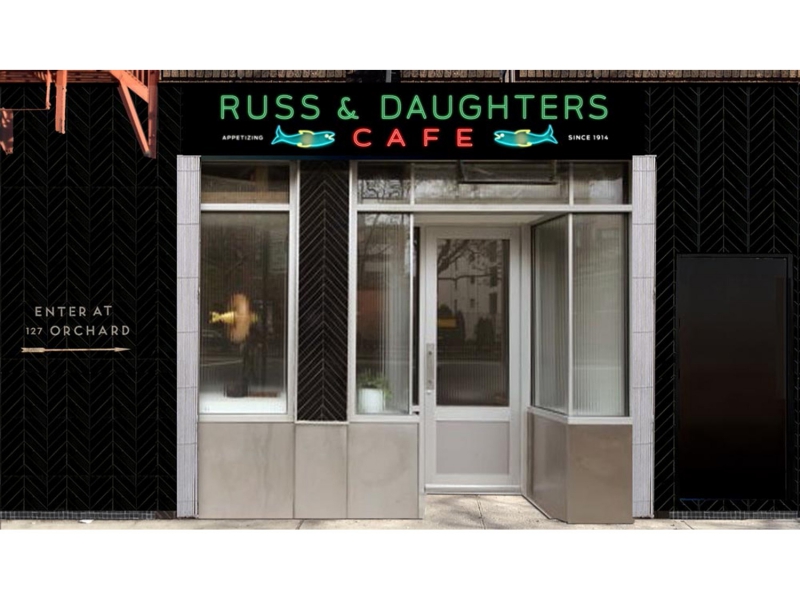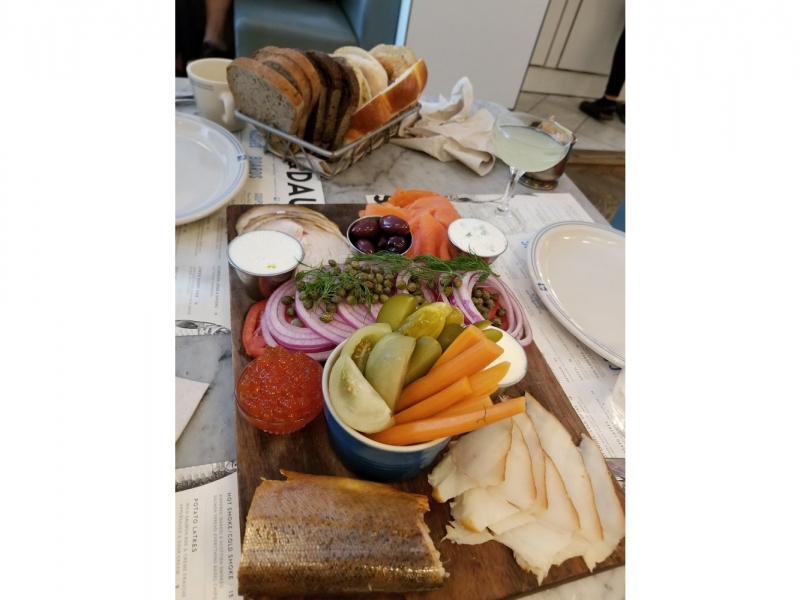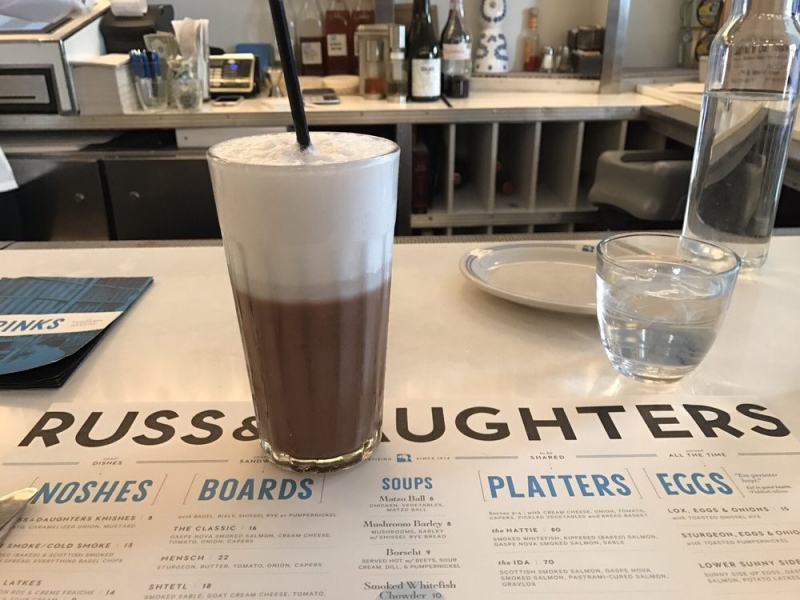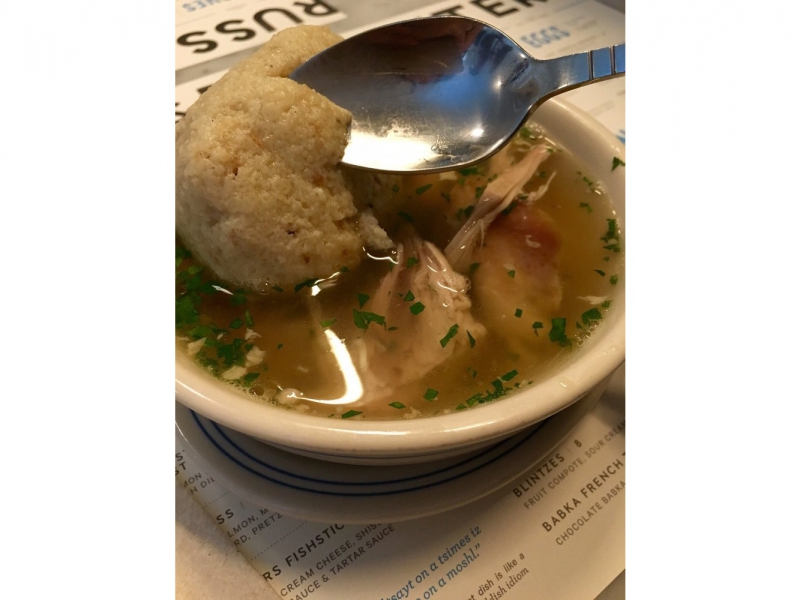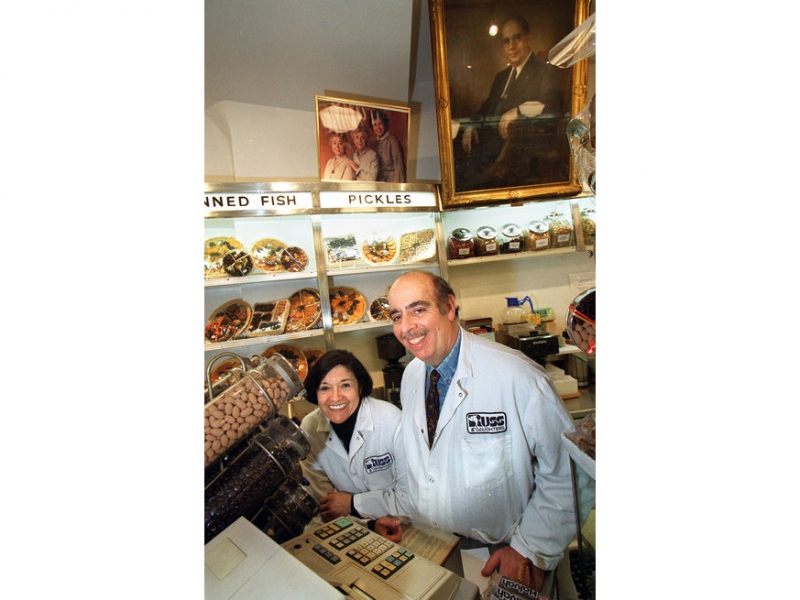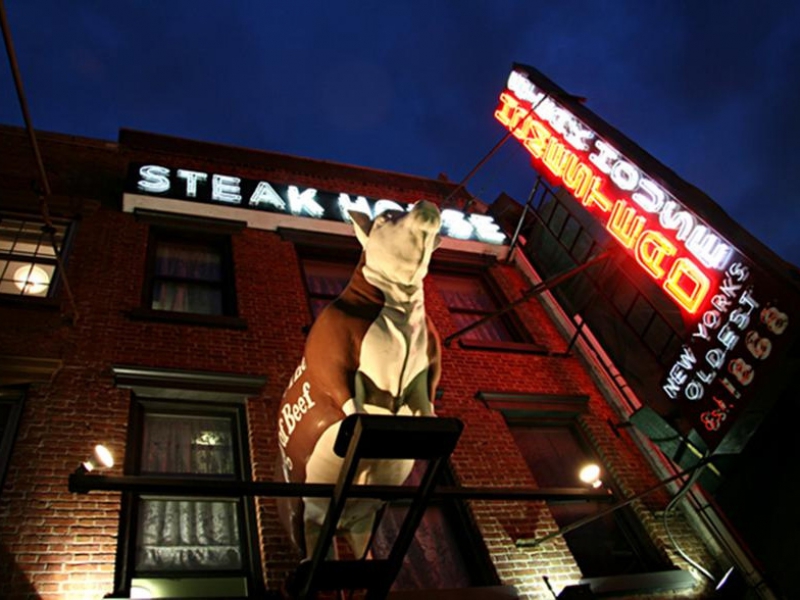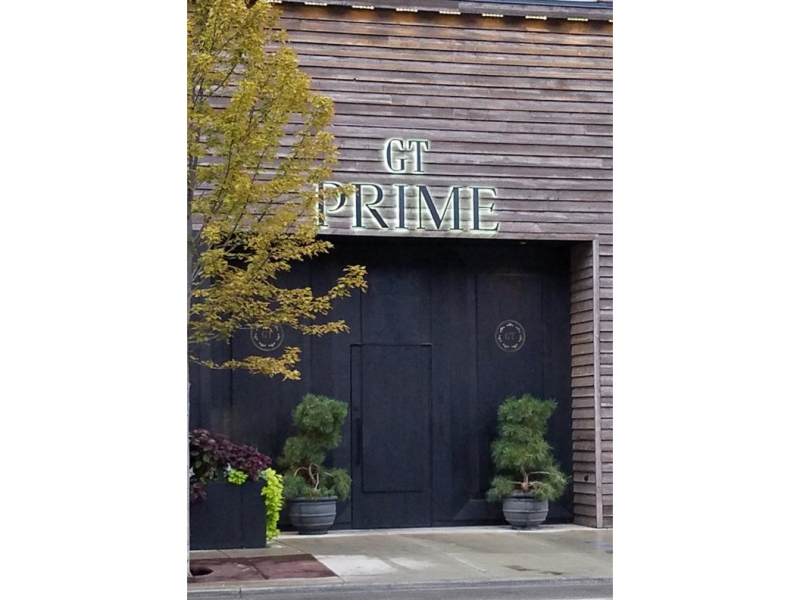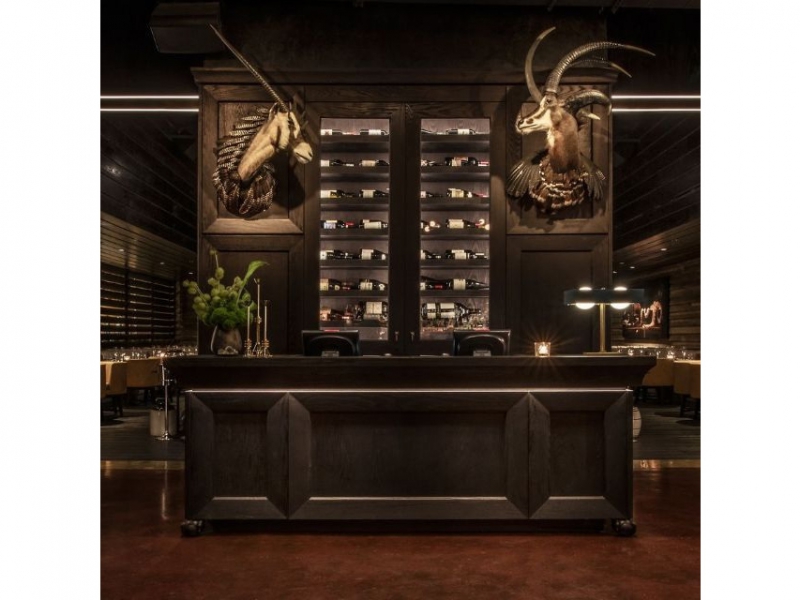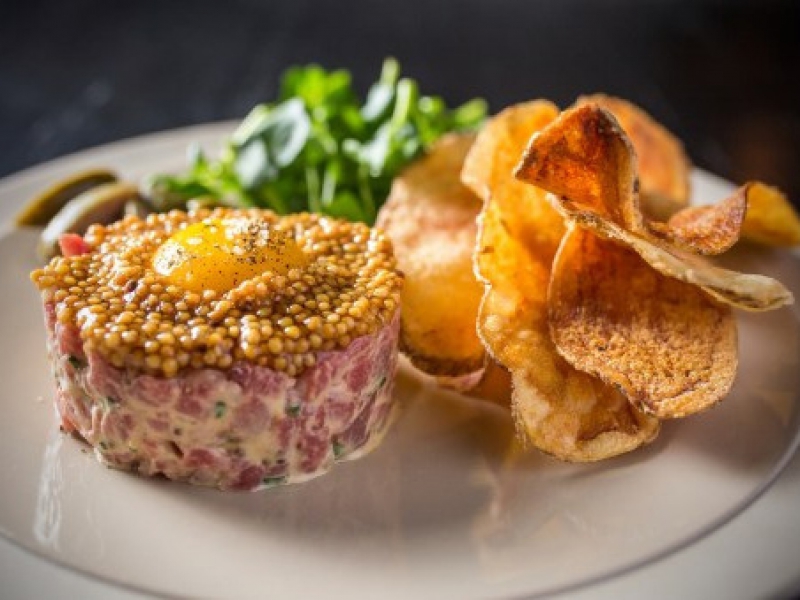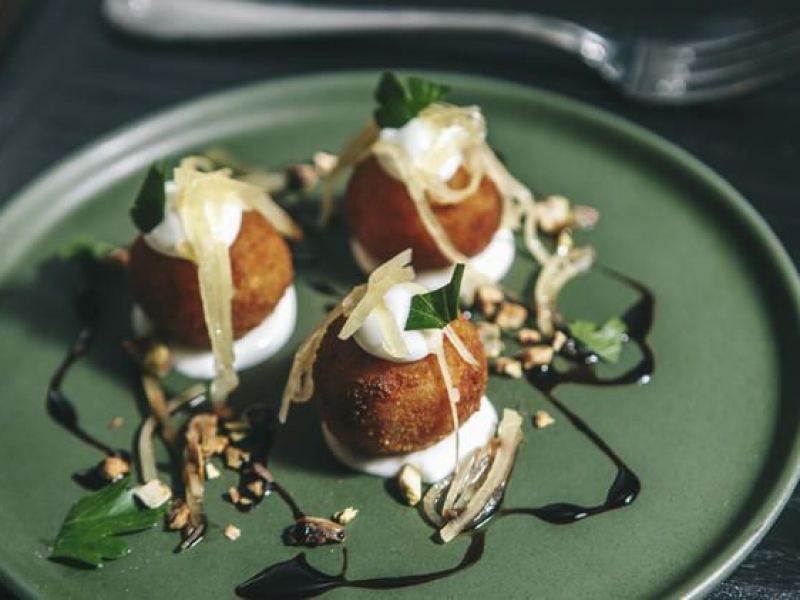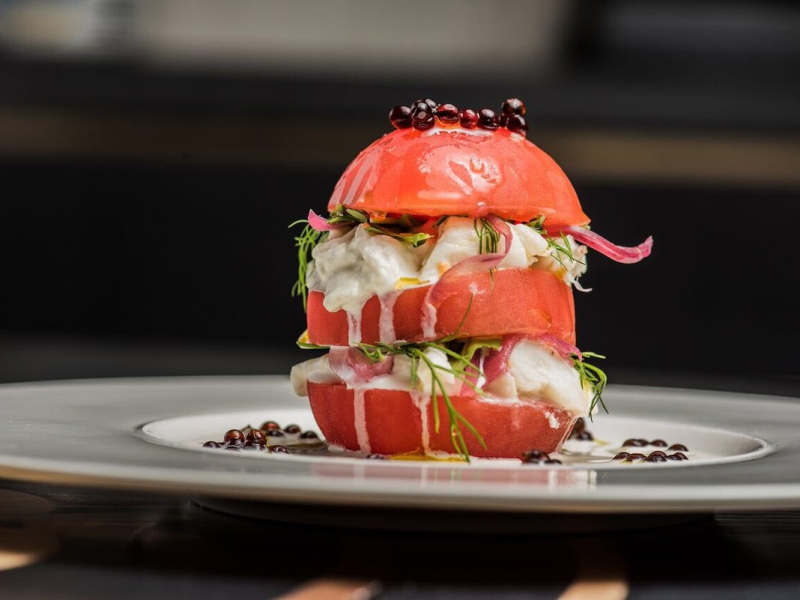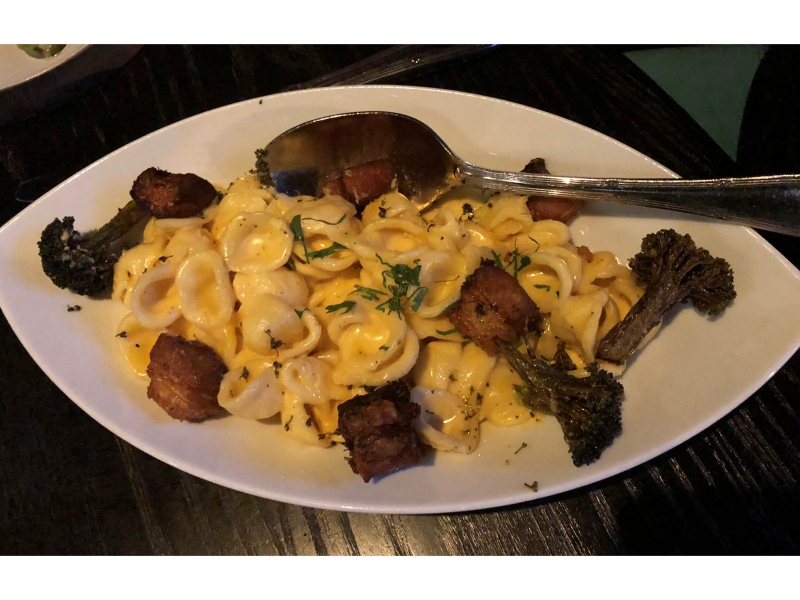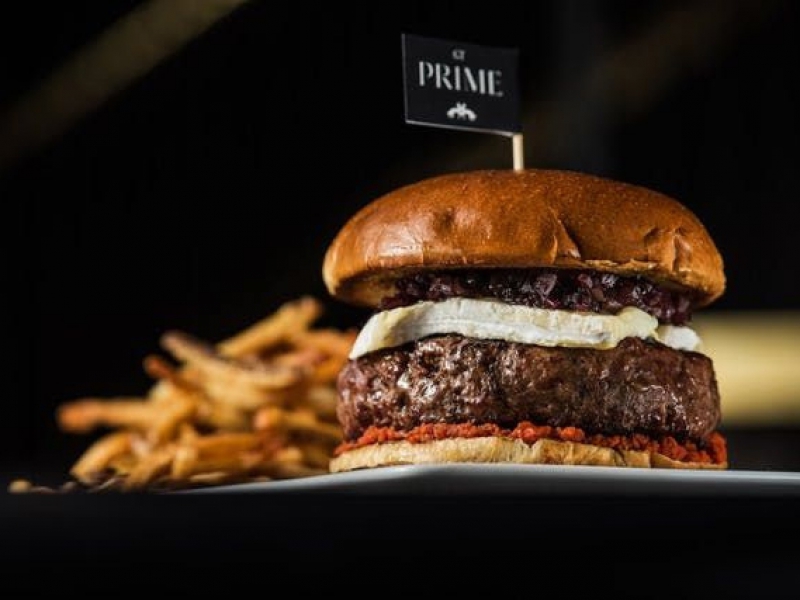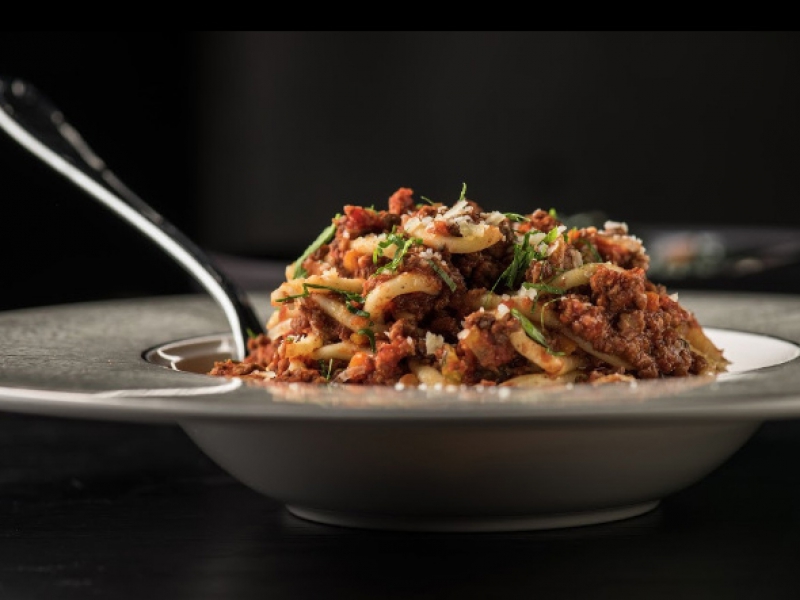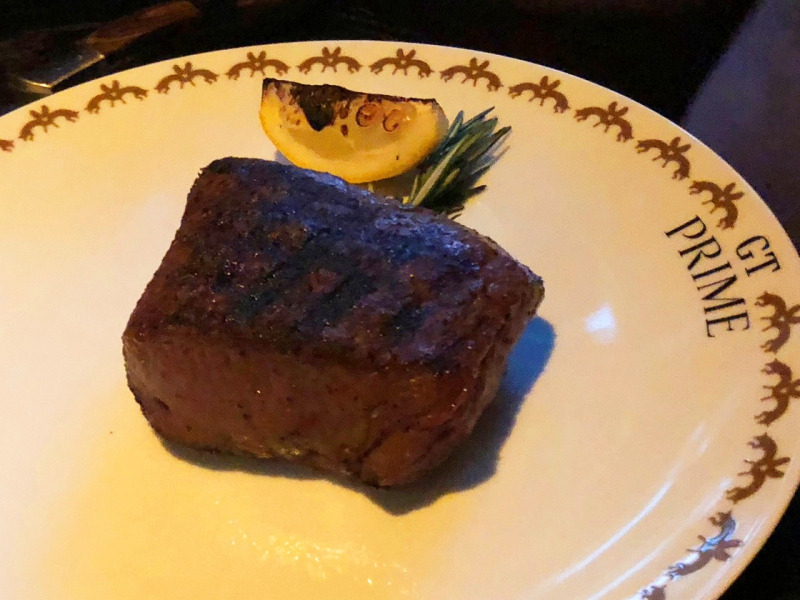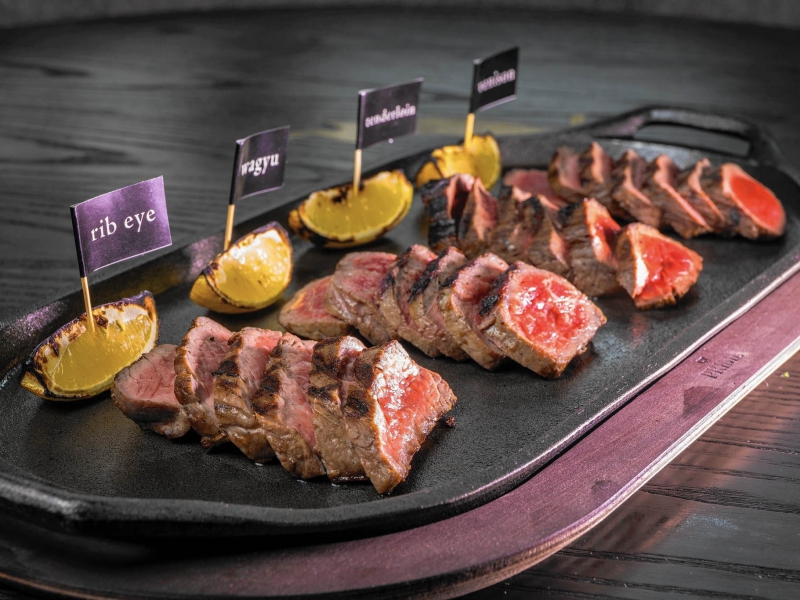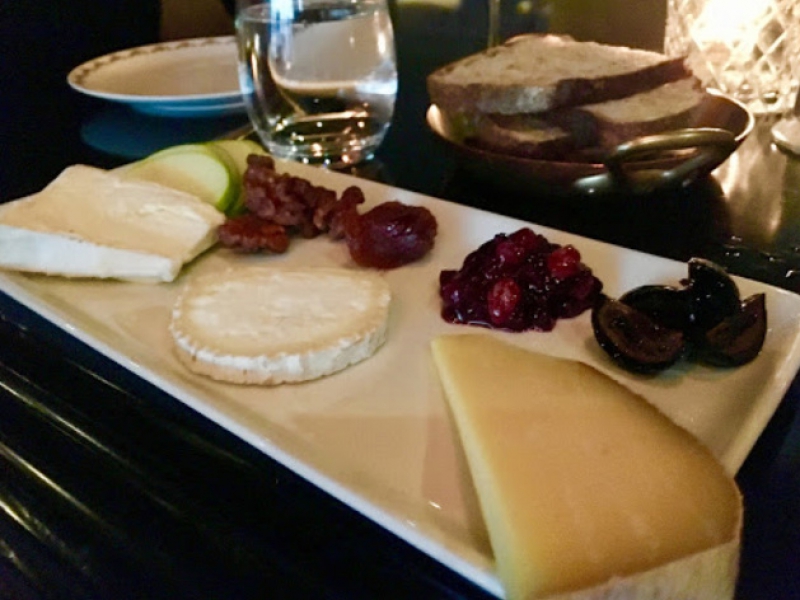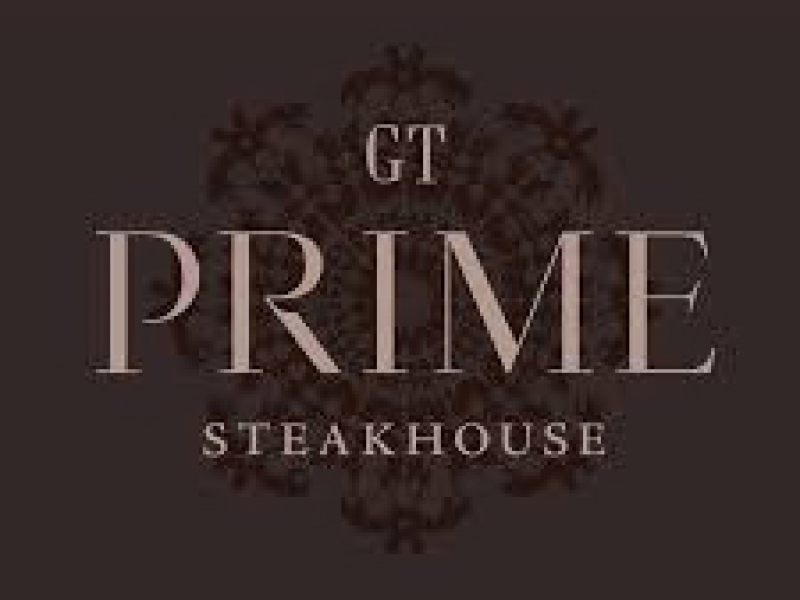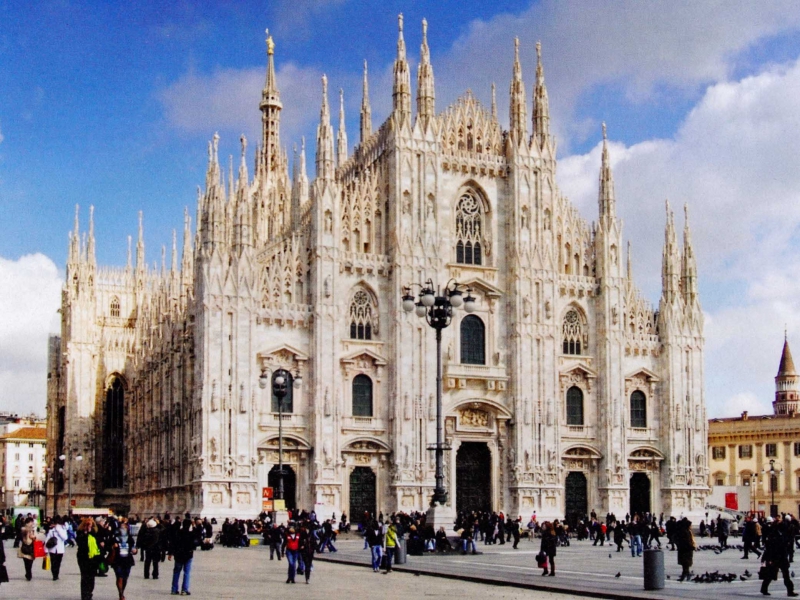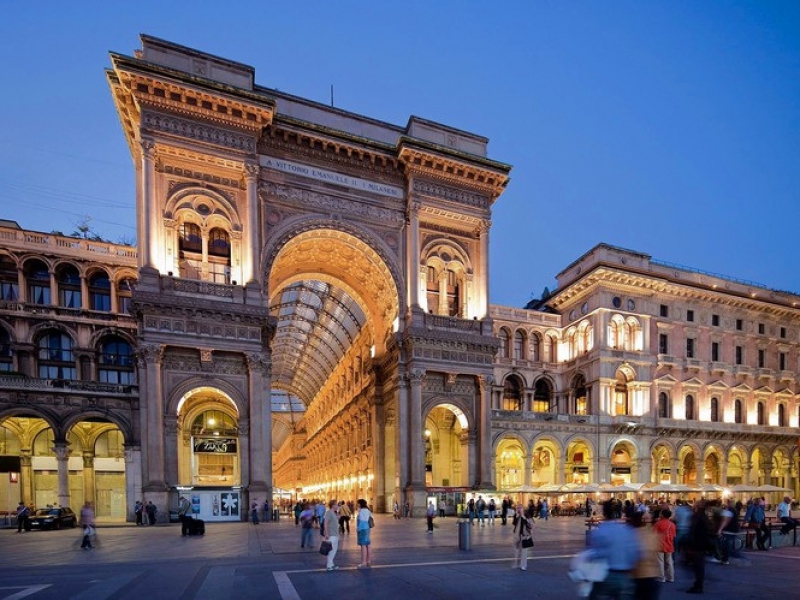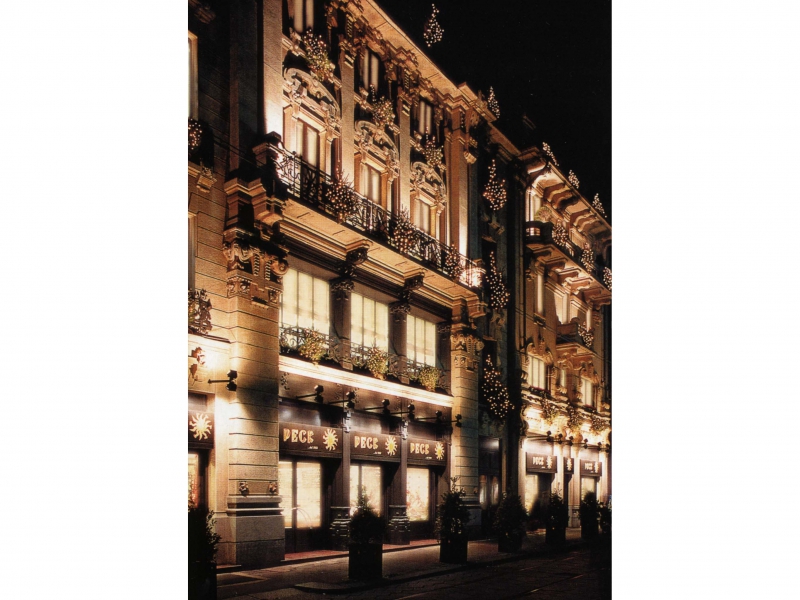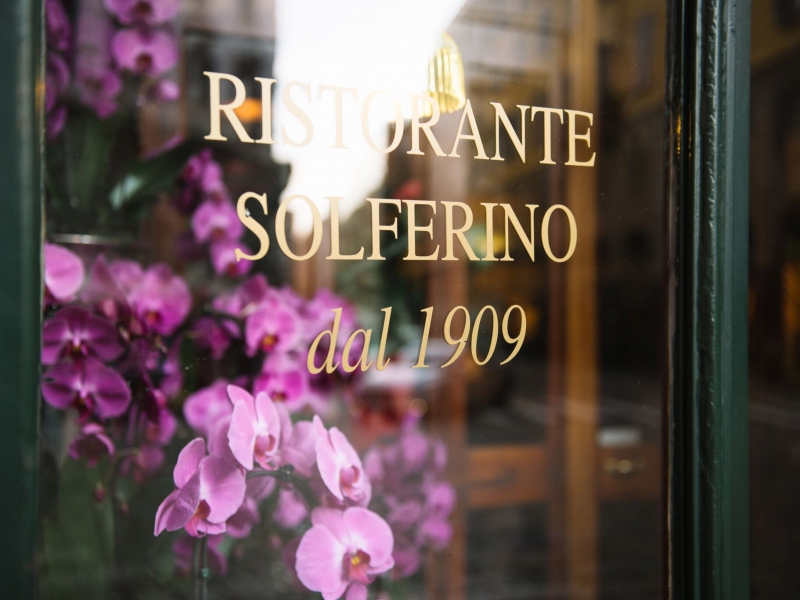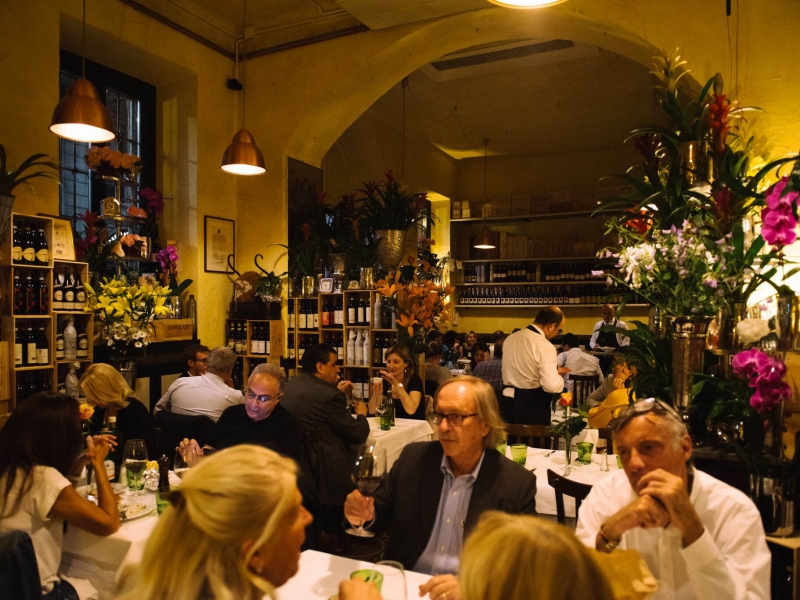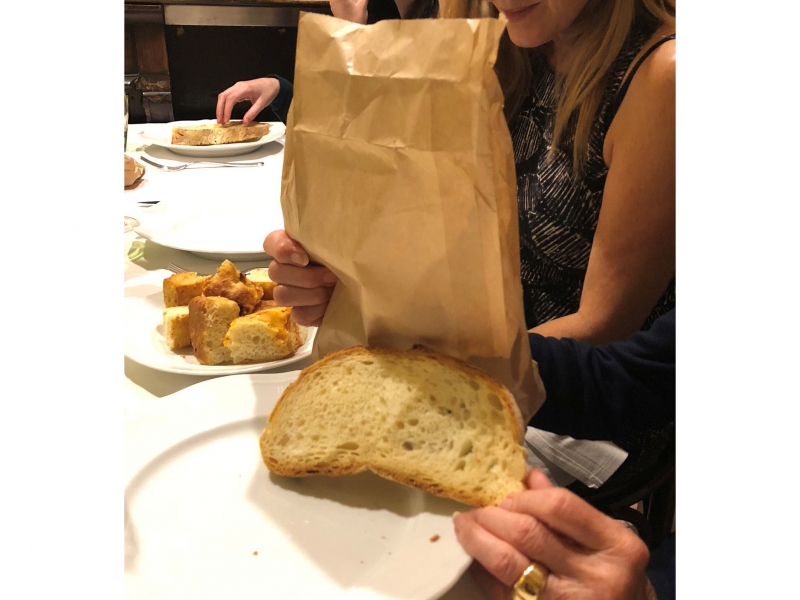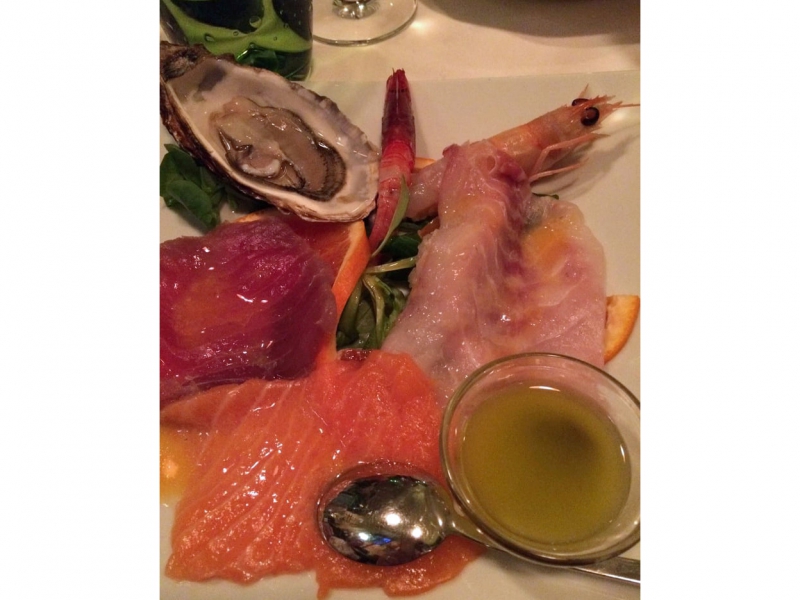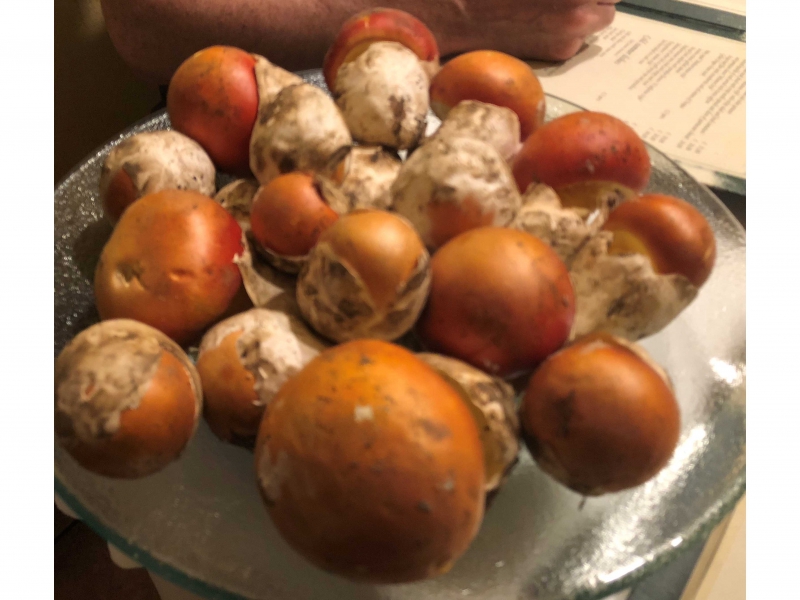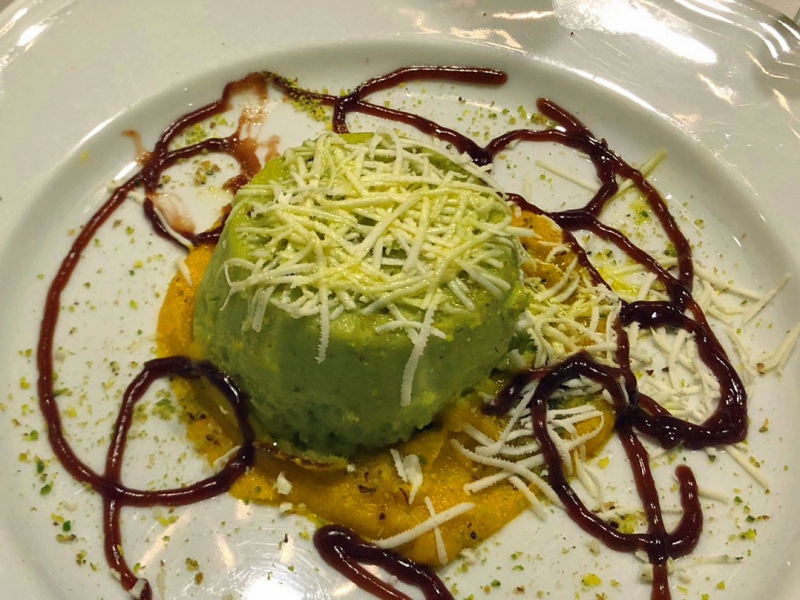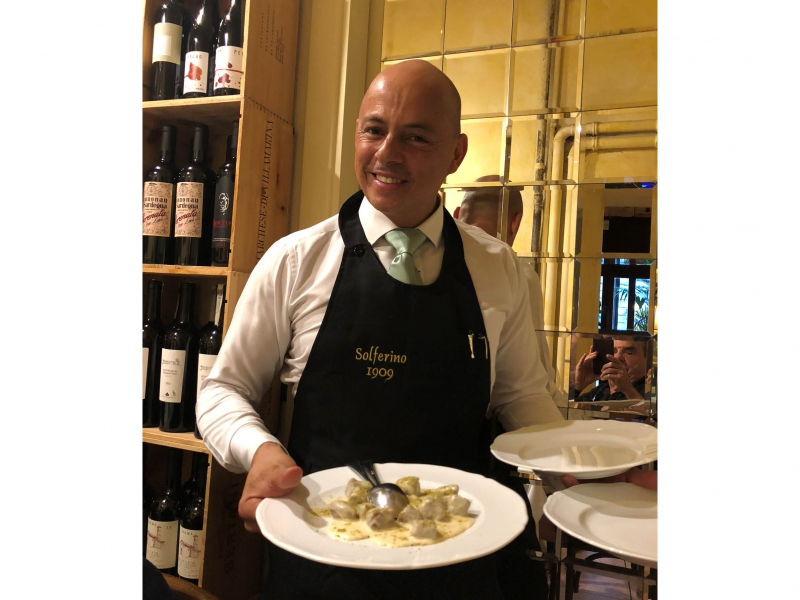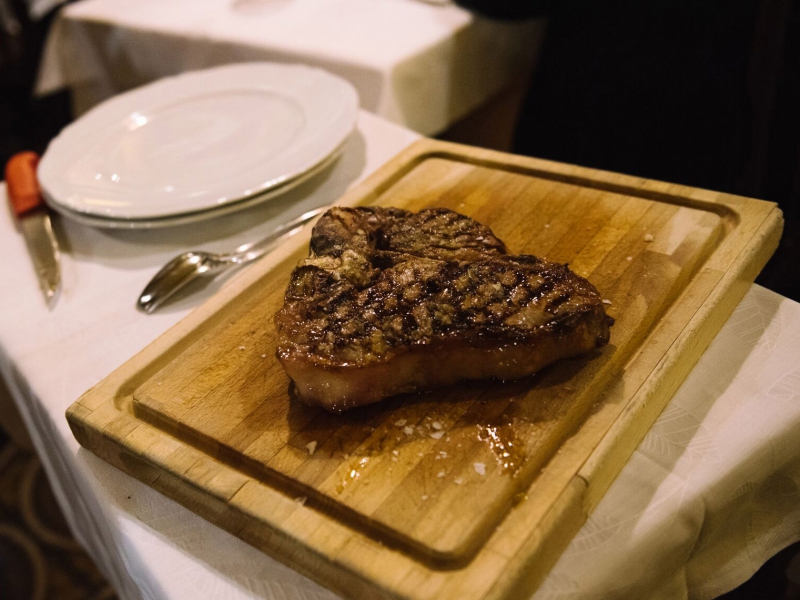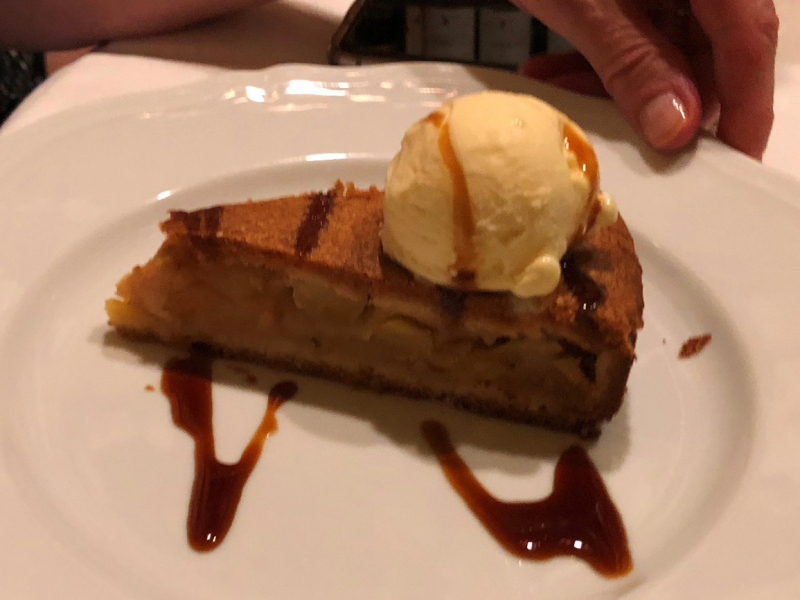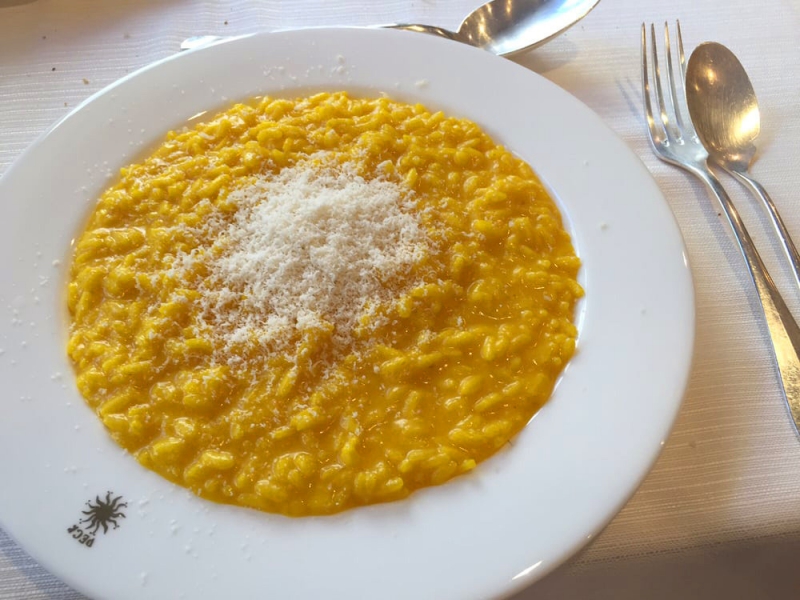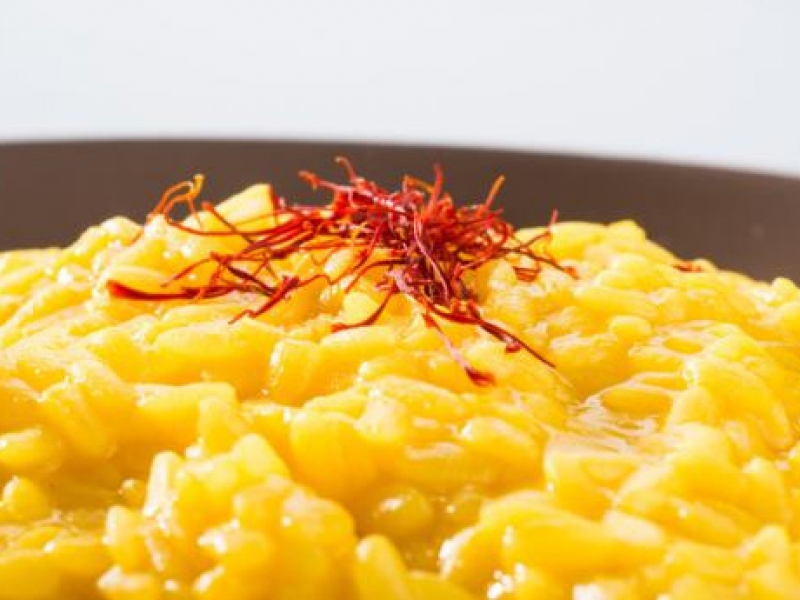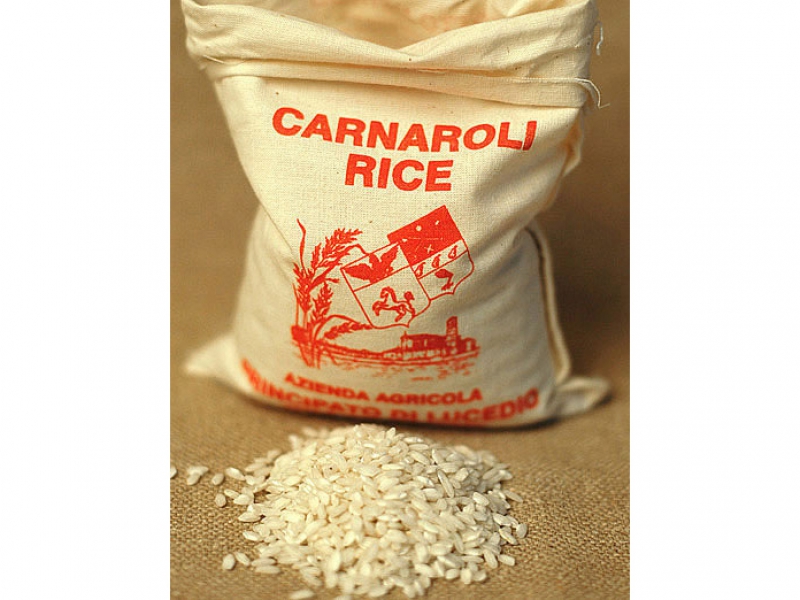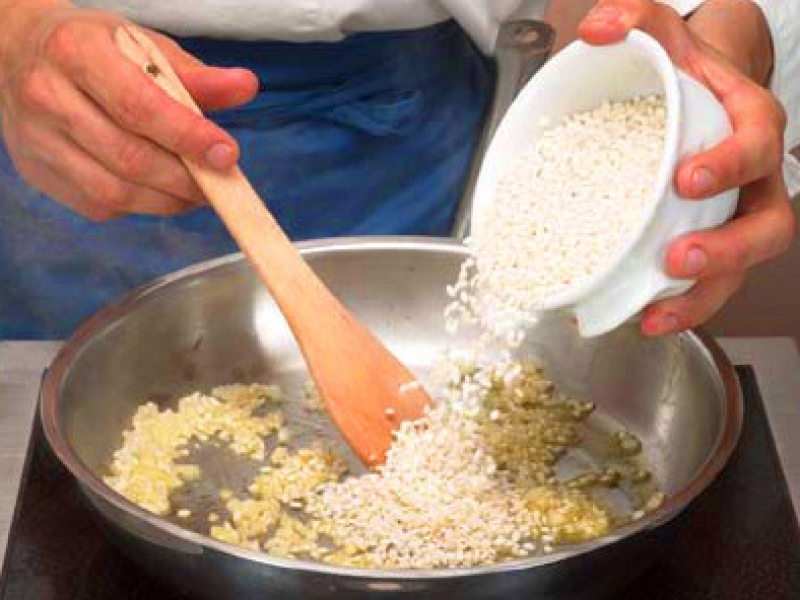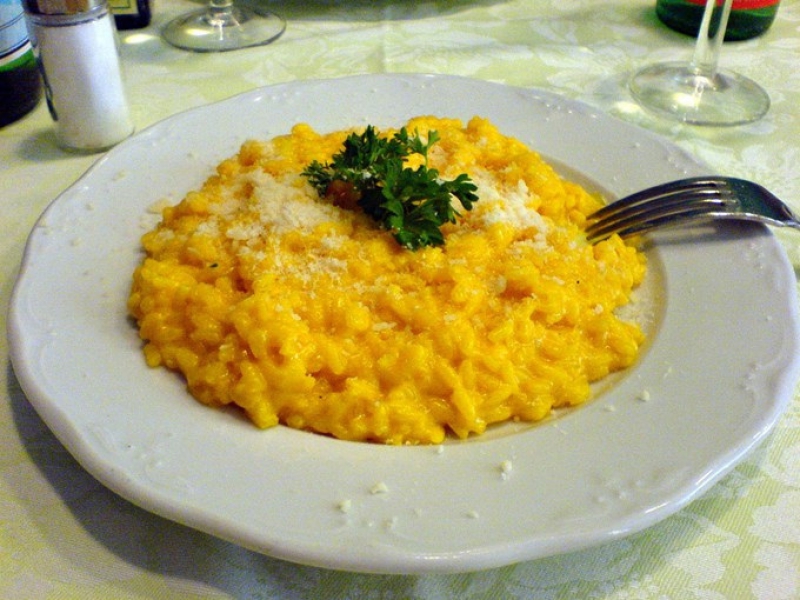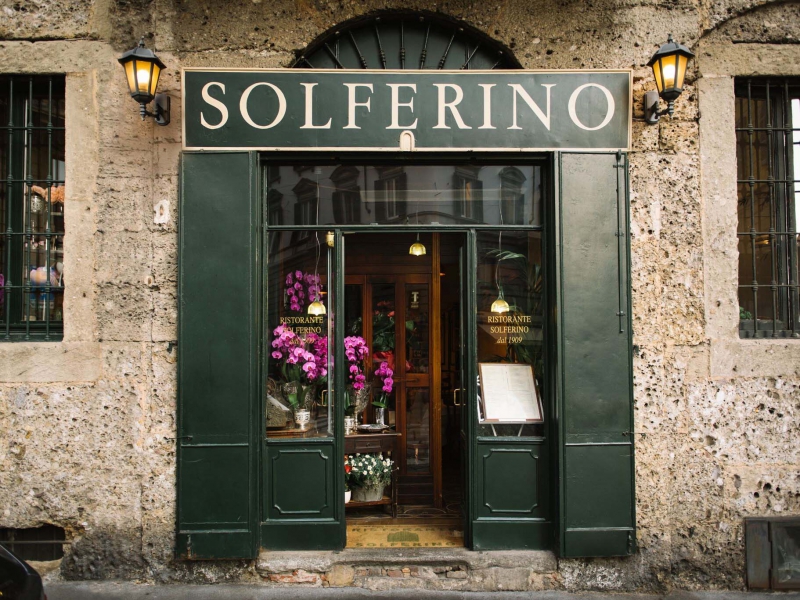Amid the holiday bustle,
will my blog go unseen?
Perish the thought!
Let’s resume in ’19.
STUBBORN SEED TAKES ROOT IN MIAMI
With the wonderful Minnesota winter settling in and all the joy that it brings, it’s time to focus on warmer destinations….namely Miami.
Joanne and I spend a fair amount of time there during the winter as it offers a target-rich restaurant scene – ideal for gaining ideas that can be put to use across the PARASOLE family of restaurants.
Miami is a magnet for rock star chefs – though seasonality makes it a tough market to crack. Some of the best have flamed out. That includes Tom Colicchio at HABITAT, Rick Tramonto of TRU in Chicago, and even Steven Starr with THE CONTINENTAL on Collins Ave.
But for every closed door, another seems to open.
Let me introduce you to the STUBBORN SEED.
If Miami had to lose Tom Colicchio to make room for this cozy, 72-seat urban bistro, I’d say that’s a fair tradeoff, because this newcomer is a gem. Sandwiched between JOE’S STONE CRAB and RED STEAKHOUSE south of 5th on Washington Avenue, Stubborn Seed serves up one of the city’s best dining experiences.
Be warned, this place is pricey. And its small size can make for a tough-to-nab reservation. But Stubborn Seed is worth it.
Here’s what the Miami Herald’s restaurant critic, Victoria Pesce-Elliott, had to say about it: “Telegenic and
tattooed talent Jeremy Ford is turning out some of the most exciting, balanced and delicious flavors that South Beach has ever seen.”
I could not agree more.
Ford trained for three years under super chef Jean Georges Vongerichten at MATADOR in the chic EDITION HOTEL in Miami Beach. It’s one of our favorite Miami Beach restaurants, but with Stubborn Seed Ford may have actually eclipsed his mentor.
Let’s start with a cocktail, shall we? Stubborn Seed’s are DIY. Order a Negroni, for example, and it will come with all the fixins’ elegantly arrayed on a silver tray, complete with eye-droppers of houses-made bitters. It’s the kind of production you’d get at the Connaught Hotel’s legendary bar.
I’m not CERTAIN about the name, Stubborn Seed, but I AM certain about the food, which absolutely nails the yin and yang that define culinary artistry: warm & cool…dark & light…sweet & savory…high & low…cream & crunch…spice & mild.
Setting the tone for what was to come, our evening began with complimentary snacks (if that term even applies to what was laid before us): two delicious potato-encased lobster fritters accompanied by a duo of crispy hollow potato puffs, each crowned with a dollop of caviar. “OMG…not THAT again.”
Next came two Parker House-like rolls – except these were made from soft potato with bee pollen, and were served with an assertive, bright green garbanzo/chili spread.
A signature appetizer is a lavash cracker topped with a creamy chicken liver spread and dots of smoked hot chili jam. They’ll run you $8 each, and are worth every penny.
Another standout appetizer is Warm Celery Root with Crackling Mitake mushrooms, creamy mustard and “herbs and blooms.” And whoever thought that one could get hooked on celery broth? But that was the case with the Jojo Tea-Cured Cobia with Honeycrisp apple, compressed radish and fennel fronds.
In the “not-so-healthy (but-who-cares?)” department were the deep-fried Truffled Gooey Cheese Balls and the Smoked Foie Gras, featuring a fat lobe of pastrami-spiced duck liver with pickled cabbage, grainy mustard and crunchy rye bread crumbs. It cost a whopping $28. After eating it, however, you could easily skip your main course.
It would be the height of foolishness, though, to take a pass on Stubborn Seed’s simply prepared, but decadently delicious Butter Poached Lobster – or its Thai-flavored counterpart, prepared with lemongrass and crispy bitter garlic, and topped with green curry foam.
Another dish not to be missed is Joanne’s favorite: Sourdough Bread-Crusted Halibut with habanero carrot stew and Kombu broth.
(You may ask, “WTF is kombu?” It’s an edible kelp widely eaten in East Asia.)
Among the side dishes we enjoyed: Roasted Heirloom Carrots with fresh herbs, unknown types of seeds, yogurt and carrot puree; and the Charred Red and Yellow Beet “Napoleon,” accented with blackberries and micro flowers.
Desserts are a big deal as well. Joanne and I have two favorites. Hers is the Corn Pavlova, made from roasted sweet corn custard, bay leaf meringue, pickled blackberries and popcorn gelato ($11…not bad).
I don’t think I’ve had Snickerdoodle Cookies since Eisenhower was President, but I had four of them here (at $4 each) – and they were everything you’d expect in a soft, gooey, buttery, cinnamon-spiked dessert oozing with molten French premium Valrhona Chocolate.
A preponderance of my Minnesota readers winter in Naples and not Miami. My advice to you: Take an overnight to Miami Beach to dine at Stubborn Seed. You’ll be richly rewarded.
As I noted before, reservations are difficult (786-322-5211), so plan well in advance. Note that the restaurant is closed Mondays and serves dinner only.
Be prepared, too, to spend some money here. Appetizers hover around either side of $20 and main courses are in the $35 to $55 dollar range, so consider it a splurge night – but one that’ll be well worth it.
W.T.F.
PHIL
A STEAKHOUSE STALWART IN NEW YORK
So many are gone now……
I can remember a few…LUCHOW’S on 14th street….the WEINERSCHNITZEL EMPORIUM…..MAMA LEONE’S, a temple of Italian wretched excess, with 1250 seats and gigantic platters to match. Mama shuttered the place in 1994, but I’ll never forget the fun and generous spirit of this Theater District landmark. They even gave you food – sometimes bread, sometimes cheese – to take home.
And how about DELMONICO’S – New York’s first steakhouse – in lower Manhattan? It’s long, long gone, and to this day I regret not eating there.
SPARKS STEAKHOUSE survives – and indeed thrives. Which is more than you can say about its most notable patron: mobster Paul (Big Paulie) Castellano, who in 1985 was gunned down by the Gambino family outside Sparks’ front door after downing a 24-ounce Porterhouse (medium rare) dinner.
Still going strong as well: KEEN’S CHOPHOUSE, open since 1885 on 36th Street (see my October 19, 2017 post about this restaurant). Even today, it boasts a stratospheric ZAGAT rating of 4.5. Don’t miss the MUTTON CHOP.
And, of course, there’s still the grandaddy of ‘em all – THE OLD HOMESTEAD STEAKHOUSE, founded in 1868 down in the Meatpacking District. Still robust! Still packed!
But there is one other that I have admired for years, and that’s GALLAGHER’S STEAK HOUSE. In the late 1970s, when I was in New York almost every other week for business, I would find myself wandering over to West 52nd street simply to marvel at the camera-ready meat locker (visible from the street through the front picture window). Staring at haunches of Prime beef on their 30-day dry-aging journey to the table, I can remember thinking, “That’s my kinda place”.
Maybe Gallagher’s is where the seeds for MANNY’S were planted in my mind.
Created in the late 1800s, it was called Club Evelyn until 1927, when Helen Gallagher (a Ziegfeld Girl) took over and rechristened it GALLAGHER’S STEAK HOUSE.
Decades passed, and the restaurant’s look hardly changed at all. But then, in 2015, a fellow by the name of Dean Poll took over and reportedly sunk a badly needed $5,000,000 into the place to bring it into the 21st century. In my view, he was really smart about it, because the menu doesn’t appear to have strayed from the steakhouse classics that proved so durable over the last hundred years or so. It still checks all the boxes of a big and brawny New York-style Power Steakhouse.
Poll did make some updates to the interior – the kitchen, for example, now opens to the dining room – but the beautiful u-shaped bar remains. And most important, the restaurant retains the slightly saloon-y vibe that is so reassuring, non-threatening and comfortable. BRAVO!
Check out the images below….
A stiff drink…Flintstone-sized Porterhouses grilled over hickory charcoal…
swordfish and lobsters…
salads and hash browns…
desserts right out of Steakhouse Central Casting…
and a 10-ounce burger to boot.
No wonder Gallagher’s remains a favorite of movers and shakers, bankers and brokers, mobsters and movie stars – and, of course, athletes.
Now, I did not go to the men’s room when I was there. But I can imagine the walls are emblazoned with pictures of jocks – generation after generation of them. In fact, I think it’s that it’s possible – maybe even probable – that Babe Ruth and Derek Jeter not only share wall space, they might have even shared the same original porcelain fixtures. I don’t know. I was just wondering.
W.T.F.
PHIL
https://www.restaurantji.com/ny/new-york/gallaghers-steakhouse-/
A STARLESS MICHELIN
In the late 1800’s, Edouard and André Michelin ran a rubber factory in the small town of Clermont-Ferrand, France. Among their first products were bicycle tires, later supplanted by automobile tires. At a certain point they adopted the American system of assembly line production – with one new characteristic: they felt that American tire manufacturers used inferior rubber and other lesser materials. They embarked on a journey to become the premium tire producer in the world. (Based on their later dominance of the tire industry, it seems they succeeded.)
The brothers, in 1894, while attending a trade fair in Lyon are said to have spotted a stack of tires that resembled the form of a man.
Thus their humanoid official mascot was created. And they named him BIBENDUM (Latin for “Now is the time to drink”). How he got that name, I’m not entirely sure. At any rate, the world came to know their masic simply as “The Michelin Man.”
The Bibendum character was refined over the years from a cigar-smoking bicycle rider to a jovial paunchy Michelin cheerleader. In the meantime, around 1911 in London, the Michelin Building was built, with offices upstairs and a one-stop Michelin shop for all your automotive needs on the ground floor.
The iconic building remains intact, sporting a unique blended aesthetic style of Art Nouveau and Art Deco, redolent with stained glass and decorative tile work. It’s located in the heart of Kensington about a dozen walking blocks west of Harrod’s, where Fulham Road and Pelham meet.
However, in late 1980, as the tire and automotive business evolved, the building became obsolete for the retail tire business.
So it was that in 1987, designer and restaurateur Terrance Conran stepped up and converted the building, part of which included his new BIBENDUM RESTAURANT. This smart, two-level restaurant featured British-influenced French cuisine on the upper level and an oyster bar on the ground floor. While receiving lots of press from the London newspapers, the restaurant was viciously expensive, and by 2015 it had faded and was no longer relevant.
Enter Claude Bosi, the cheerful French bruiser of a chef fresh from the world-acclaimed, two Michelin-starred HIBISCUS restaurant in London’s Mayfair neighborhood.
Although Bosi was never one to hew to tradition, he chose to retain some Bibendum classics, including garlicky, butter loaded escargot, langoustines with mayo, gnocchi with wild mushrooms, and smoked salmon roll-ups, alongside palate-stretching dishes such as rabbit with langoustines.
Bosi has also brought the prices back to the real world. Joanne and I noted recently that a Prix Fixe lunch was featured at about $46.
Joanne and I have dined at Bibendum on several occasions, although never in the expensive upstairs dining room. Our preference was – and still is – the more affordable ground floor OYSTER BAR. Maybe it’s because we are continually searching for ideas on behalf of the oyster bars at both SALUT restaurants.
On our visit last June, we noticed that the Oyster Bar had been refitted with a sleek and modern flavor, all in a “very Chelsea way – i.e. laid-back luxury, with Michelin tire-like chairs designed by Eileen Gray and upholstered in supple saddle tan leather.
Maybe it’s age, but I preferred the previous look. It felt more workman-like…less decorated. But no matter. The food is still superb.
On our dining occasions (always for lunch), Joanne typically opts for the spinach salad with fresh figs, goat cheese and toasted slivered almonds, or she’ll choose the Tuna Nicoise salad with the canned Italian tuna (yes, that’s the right way: using high-quality tuna canned in olive oil. We could never get away with that in Minnesota, where the expectation is seared fresh Ahi tuna). We shared Oysters Rockefeller, too, and some just-shucked, pristine and briny oysters.
On both lunches we finished with a wonderful cheese plate of British Cheeses including a pungent and spreadable slab of Stilton – a worthy rival to French Roquefort.
So here’s the irony.
The most prestigious, well-respected, famous restaurant guide book on the face of the Earth is THE MICHELIN GUIDE.
And yet….and yet…..
Despite being named for the brand’s mascot, Bibendum has NEVER, EVER been awarded a Michelin Star.
The best they have done is three knives and forks (in red), which means a delightful and comfortable restaurant. Perhaps Claude Bosi will fix that.
After all, in a recent review in the London Guardian, Jay Rayner said, “The sunlight [in the upper level dining room] feels like a room where only good things happen.” And he ended his commentary with, “Welcome back, BIBENDUM. I’ve missed you.”
W.T.F.
PHIL
HAPPY THANKSGIVING
I’ll be back next week with a new blog. Until then, Happy Thanksgiving from your friends at Parasole Restaurants.
Gobble-Gobble
WTF
Phil
NAMASTEY, LONDON!
Although Indian and Pakastani immigration to England had flourished under British Colonial Rule, it was after World War II and the breakup of the British Empire that the numbers dramatically increased…mainly from the Punjab region.
Today, some 300,000 Indians reside in London alone.
Lucky us. Joanne and I love the variety of cuisines that India has to offer. And while no major markets in the United States – except perhaps New York – have embraced any form of Indian polished dining, London is thriving.
Due to our ongoing research, particularly for CHINO LATINO, Joanne and I have been fortunate over the years to sample and screen the best of the best for you. So if anyone out there is contemplating a trip to London, stay tuned.
These are all good. They’re all different, yet all about the same price. Some have Michelin stars.
Our first experience in London was THE BOMBAY BRASSERIE in Kensington – still going strong since 1982. TAMARIND, near Green Park is as noisy as it is buzzy, so try to get a table on the perimeter. CHUTNEY MARY, also near Green Park, remains excellent – although in this newer space the restaurant seems to have lost some of the ambience from its previous spot in Chelsea. A sensational newcomer is JAMAVAR, on Mount Street, right in the heart of Mayfair. Get table #16….a corner table for two.
ZAIKA on Kensington High Street focuses on the cuisine of Northern India, so you can expect rich and fragrantly spiced fare. THE CINNAMON CLUB offers a vast selection of sharing plates, so dining is a little different here.
But now I’m going to compare two different experiences – not better or worse, simply different. Both are Michelin starred. You decide what’s best for you…… GYMKHANA or AMAYA.
The first stop is GYMKHANA on Albemarle Street, near the Ritz. It’s a tough, tough reservation to snag, so be sure to enlist the help of your hotel concierge well in advance of your trip. Request one of the downstairs leather-upholstered booths with the hammered brass table tops (pictured). Expect powerful, punchy flavors served up in a space that evokes the Old Colonial glamour of India’s Gymkhana, or sports, clubs. Dishes not to be missed include Methi Keema, or kid goat, served in the form of spicy Sloppy Joe-style DIY sliders, meant for sharing (about $16.50 in U.S. currency). We also loved the Tandoori Wild Tiger Prawns with red pepper chutney and the Guinea Fowl Tikka with fig and onion chutney (about $28).
It was October and game played a role in many of the dishes offered at Gymkhana. A favorite, presented table side, was the Wild Muntjac (venison) Biryani baked in a pastry-sealed pot with a cooling counterpoint of pomegranate raita ($36). For a show-stopping fall vegetarian offering, get the Wild Morel Mushroom and Truffle Pilau (rice pilaf) at $28.
I ordered and did not share the Sofiyani Murgh Tikka and Sweet Tomato Chutney…oh hell, why don’t they just say “Tandoori Chicken with Black Cumin and Tomato Chutney”???
And that’s one of the things that troubled me about Gymkhana: their slavery to authenticity in ways that frustrate rather than intrigue or delight. I’m all for un-dumbed-down flavors that remain true to their origins – and as far as I know, each dish fit that bill. Everything we tried was very, very good.
But in a restaurant that caters to a primarily non-Hindi-speaking clientele (based on the mix of our fellow diners), the lengthy menu written almost entirely in Hindi, without translation, has to be as irritating for the servers as it is for the diner. It required several trips on our waiter’s part to come to our table and translate. Why couldn’t we simply choose and order without subjecting him to a never-ending series of questions and translations? The frenzied nature of the dining room didn’t help either.
Don’t’ get me wrong: The food at Gymkhana is really, really good. It deserves a Michelin star. And if you don’t mind noise and frenzy (in the business, we call that “energy”), then book a table at Gymkhana. You’ll love it – especially if you speak Hindi.
Now, on to another Michelin-starred Indian restaurant: AMAYA.
My first experience with Amaya, in the pre-iPhone era, did not end well. While using a regular camera to photograph my food, I was approached by a manager who rather rudely and forcefully told me to stop, and to stop NOW. I questioned him as to who this food actually belonged to now that I was eating it. “Does it belong to you? Or does it now belong to me?”
I answered for him: “I think this plate of food now belongs to me. So as far as I’m concerned, you can go to hell!”
So we left.
Did that make me an ugly American? (Joanne would answer in the affirmative.)
But not being ones to hold a grudge (and being culinary whores for whom food trumps any sense of embarrassment), we’ve returned several times over the past few years. Plus, they appear to have thrown in the towel on food photography.
And the food here is superb – perhaps more refined than Gymkhana, possibly not as purely authentic, maybe with a flavor profile geared more to a western plate. The space, with its sultry lighting, sophistication and open kitchen theater (with plenty of shooting flames) is sleek, chic and current. Request table numbers 17 or 19. They are both “anchored” and are just far enough away from the radiant heat of the grill and the ovens.
The restaurant describes itself as “An Indian Bar & Grill” – and that it is. Yes, they have curries and biryanis, but the grill and tandoor ovens occupy center stage. Grilled Punjab Chicken Lollipops ($18) and the Tandoori Chicken Chops in a Green Curry Marinade proved to be worthy of their cooking methods. You must also try the obligatory Naan Bread from the tandoori ovens. It’s served with a four-compartment spice tray housing Rose Petal Coriander, Peanut Dust, Tomato Chutney and Plum Chutney. The Minced Tandoori Chicken Lettuce Wraps were constructed two ways – one open-faced, the other rolled up. Coconut and Lime Sauce brought them vividly to life ($11.50).
I couldn’t finish without mentioning the Tandoor Lobster. I forget the price. I’m sure it’s expensive as hell. But on what other occasion will you have lobster prepared this way? Share it as an appetizer. DO!!!
Don’t pass up dessert, either. Get the Green Tea Kulfi (ice cream) or the Liquid Chocolate (in a previous post, I quoted Calvin Trillin stating that “all Indian desserts have the texture of face cream.” Has anything changed? HMMMM??)
So there you have it: GYMKHANA and AMAYA. Remember…they both sport a MICHELIN STAR.
You cannot go wrong with either. Maybe even try ‘em both.
W.T.F.
THE CATHOLIC CLERGY’S TASTE FOR FASHION
Prior to becoming Pope Francis, Jorge Bergoglio was Cardinal and Archbishop of Buenos Aires, where he spent almost his entire career overseeing churches and “shoe leather priests” … those who hear in their heart and do what they hear.
Having been to Argentina, beef is usually the first thing I think about…..either smoky and slow-cooked over an open fire (Asado) or at a Parilla, flash grilled over a white-hot wood fire (I can attest, either way is wonderful).
So it was no surprise when I began to wonder just what the dining preferences of a new Pope from Argentina might be in Rome. Wonderful, thick, fire-grilled Porterhouse steaks (Bistecca Fiorentina) can be found throughout his new home. Would he indulge?
Well, apparently the answer is no. I’ve been unable to find any kind of restaurant trail established by him in Rome. It seems likely that he has maintained his habits from Argentina, where he’s reported to have eaten very simply, usually at home. The Argentine newspaper, La Nacion, wrote that Jorge Bergoglio’s lifestyle was “distinctly austere and frugal…frequently dining on just fruit, salad and skinless chicken breasts.”
When in Rome, however, Cardinal Timothy Dolan of New York has had no trouble whatsoever navigating the indulgent culinary minefield that the Eternal City has to offer – especially at one of his favorite hangouts, Cecilia Metella.
Dolan has noted that cardinals and bishops have the dining run of the town and can still remain somewhat anonymous, while when someone becomes Pope, that all ceases and the Pope takes his meals at the Vatican or at public and charitable events.
This is about the extent of my knowledge of the church hierarchy’s eating habits, but one thing I know is that they have a pronounced taste for fashion. And Ground Zero for clergy-flavored sartorial splendor is GAMMARELLI – THE OFFICIAL TAILOR TO THE POPE. It’s been around since 1798, and appears as influential as it’s ever been. In 2007, Pope Benedict XVI was voted by Esquire magazine as “The accessorizer of the year.” Guess who outfitted him?
I don’t think any important vestments at Gammarelli are off the rack. All are custom made and meticulously fitted by a seasoned group of highly skilled cutters, tailors and seamstresses. The only exception is when the College of Cardinals has gathered together in the Sistine Chapel after the death of a Pope to elect a successor. At that time Gammarelli swings into full action mode. They need to be instantly ready to dress the new Pontiff and since they have no idea what size he’ll be, they fabricate three separate sets of Grand Papal Vestments – small, medium and large – to have at the ready once the white smoke appears from the Sistine Chapel chimney.
I was in their shop recently and I asked how it all worked. They told me that whenever new vestments are needed, “The priests, bishops and cardinals come to Gammarelli to be fitted. When the Pope needs new garments, Gammarelli goes to the Holy Father.”
They also told me that most cardinals have two complete sets of their iconic bright, fully saturated red garments. When I inquired how much money might be involved, they said, “Five to six thousand euros for the pair” – or $6,000 to $7,000.
I have no idea what the Pope’s garments must cost, but I don’t think $50,000 to $60,000 would be far off – maybe more…maybe much, much more. Just check out the bejeweled Pope Benedict parading down the main aisle of St. Peter’s. Or for that matter, check out the “decked-out” Lenny, the chain-smoking American Pontiff from the HBO series, The Young Pope, announcing himself to the cardinals. It looks as if his inspiration was Pope Pius….
Did Gammarelli craft Lenny’s garments? I didn’t ask. It was probably Wardrobe Central in Hollywood.
So now comes the fun part.
Gammarelli is a great place for gifts. The shop is located right behind the Pantheon and right next door to the HOTEL SANTA CHIARA.
You can pick up a Zuchetto – the little skull cap – available in red for a cardinal and purple for a bishop.
The wide-brimmed hat is called a Galero and was worn by cardinals. Now it’s used when a cardinal dies. One month to the day after the death, the Galero is raised to the roof of the cardinal’s home cathedral and stays there till it falls or deteriorates. You probably don’t want to buy one of those…..too creepy.
They sell chalices…but who needs a chalice. Cuff links? Maybe.
Cologne? Sure. (What do they call it? ”Salvation, by Gammarelli”?)
But the best go-to, take-home gift has to be SOCKS. I know, because I’ve been buying them for years. In fact, when I walked into the store this last June – on my first visit in several years – the proprietor pointed at me and said…”Socks!”….YUP!…. Red for the cardinals and purple for the bishops. They run about $20 per pair.
So…when in Rome? Pay them a visit. They are helpful and friendly.
Finally, as I looked at the bright red shiny shoes in the window, I could not help but think, “The Devil may wear Prada, but the Pope wears Gammarelli.”
W.T.F.
PHIL
LOX, STOCK, AND A BARREL OF SCHMALTZ
On September 22, 2018 the New York Times reported that Anne Russ Federman, age 97, had passed away.
Anne was the oldest surviving daughter of Joel Russ, founder of RUSS & DAUGHTERS, the temple of smoked sturgeon, herring, lox and bagels on Manhattan’s Lower East Side. All three of Joel’s daughters – Hattie, Ida and Anne – worked the counter full-time beginning in their teens, with Anne starting in 1935 at age 14.
It all began with their father, Joel Russ, a Jewish immigrant from what is now Poland coming to New York City in 1907. Penniless, he started out by selling herring and schmaltz (rendered chicken or goose fat) out of a barrel on Hester Street. Soon he was able to buy a pushcart and added mushrooms and a few assorted delicacies to his budding enterprise. And finally, in 1914, he moved to a brick & mortar store that he named RUSS’S CUT RATE APPETIZERS. Six years later, in 1920, he moved the operation to its present location at 179 Houston in Soho.
So why the word “Appetizers?”
I understand that Jewish dietary laws dictate that meat and dairy cannot be eaten or sold together, nor can meat and seafood. As a result, two kinds of stores emerged: those that sold meat (delicatessens); and those that sold seafood and dairy, which came to be called “appetizer stores” – kind of like a seafood deli.
(I don’t know this for sure, but Russ & Daughters may be the last remaining “appetizer store” in New York.)
And so it was that in 1935, having no sons, Joel Russ made his three daughters full partners in the business. Thus began a long line of family generations that run the store to this day. The girls’ husbands all became part of the family business.
Third-generation operators were Mark Russ Federman and his wife, Maria. Mark quit lawyering for good after filling in as a “counter man” one week. In addition to slicing lox into paper-thin slices, Mark went on to write his reflections in a book titled The House That Herring Built. Not stopping there, he wrote and produced a film called The Sturgeon Queens, which was directed by Julie Cohen as an ode to his mother, Anne, and her sisters.
Ruth Bader Ginsburg, Maggie Gyllenhaal and Morley Safer all had cameos in the film.
Today the fourth generation is at the helm, led by Niki Russ Federman and her cousin, Josh Russ Tupper. They’ve add a New Age “wasabi flying fish roe” to the mix – as a topping for the sliced smoked sturgeon inside the bagels – but for the most part the offerings remain as they always have.
In my posting of September 15, 2016, The Best of the Wurst, I cited Russ & Daughters as one of our favorites in NYC. Check it out because it was on that visit one Saturday morning that Joanne and I stood for twenty minutes ass-to-elbow amongst the throngs of hungry Type A Lower Manhattanites just to get a bagel.
As it turned out, we ordered a lot more than just a bagel. While patiently staring at the refrigerated cases loaded with smoked mackerel and sturgeon, lox and pickled herring (some with curried sour cream), along with chopped chicken liver redolent with schmaltz and onions begging to be slathered on an onion bagel, Joanne and I both lost it.
We have a habit of occasionally pigging out and pig out we did. First, I ordered an onion bagel with smoked salmon, sliced fresh tomatoes, capers and loads of scallion cream cheese…. schmear. Then I blurted out “Gimme one of those salmon and cream cheese bagels with the salmon fish eggs on top.” Joanne, being only slightly less out of control than me, went for the sweets – ordering a Babka (a sort of yeast risen brioche-like coffee cake wrapped around a dark chocolate fudge filling); a Raspberry Rugelach, a semi-light and flaky pastry; AND an iconic New York Black & White cookie. I can’t figure it out….she maintains her weight right around a hundred pounds. Damn her.
Well, we got our overstuffed big bag of goodies only to realize that Russ & Daughters has no seating, save for two iron park benches that sit outside in the front. After another 20-minute wait for this coveted spot, we finally sat down and tried our best to ignore the stares from everyone else who wanted that seat. Screw ‘em (Joanne’s words).
You do not stay in business for a hundred years without being smart and crafty. And they were plenty smart to open RUSS & DAUGHTERS CAFÉ two short blocks away on Orchard Street. It’s an attractive, sit-down-and-be-waited-on kind of place where you can get dishes with any of their Houston Street offerings as well as complete meals such as Shakshouka, a Mediterranean dish of eggs poached in a peppery tomato stew.
The Smoked Salmon Eggs Benedict comes atop a toasted brioche. Potato Latkes (think mini hash browns) come with a savory side of sour cream and salmon roe. And there are a number of “Boards,” some with smoked salmon, others with smoked sturgeon, and always with sliced tomatoes and red onion.
Thirsty? Get a classic Chocolate Egg Cream – a drink that has neither eggs nor cream, but is concocted with carbonated water, milk and chocolate syrup.
And if it’s cold outside or if you have a cold…well, there’s always a steaming bowl of Matzo Ball Soup. I can’t recall if they have Chicken Soup. If they don’t, they should.
So there you have it…..take-out or eat-in at Russ & Daughters.
I’ll leave you with this: Mark, the enterprising third-generation operator whose son, Noah, is a physician, was quoted in the New York Times piece as saying, “As far as I know, I am the only Jewish father who was disappointed that his kid became a doctor. I was thinking ‘sturgeon,’ not ‘surgeon.’”
W.T.F.
PHIL
HIGH-STYLE STEAK AT GT PRIME
Around the time that the Civil War was drawing to a close, the Midwest and West were beginning to raise cattle in what soon became staggering numbers. Local processers soon found themselves overwhelmed by the burgeoning herds, and the ranchers had nowhere else to take their cattle. In response, nine enterprising railroad moguls banded together to form THE UNION STOCKYARDS in Chicago, a facility capable of processing beef from Colorado, Nebraska, Texas, Kansas and Montana.
The Union Stockyards grew and thrived for almost a hundred years and became the world’s largest processor of cattle (as well as pork and lamb).
But the most influential accelerator to the stockyards’ growth was the genius of Gustavus Swift and Philip Armour (famous meat names even today). In 1880, they successfully designed the first REFRIGERATED RAILROAD CAR (not only that, they built a nationwide ice-producing infrastructure to service the rail cars). This meant that the finest beef on the planet – midwestern beef – and lots of it could now reach beef lovers as far east as Philadelphia, New York and Boston. Check out the diagram of the refrigerated boxcar below: very clever, indeed.
Joanne and I have dined at some of the New York Steakhouses that emerged around this time and thrive to this day…the legendary OLD HOMESTEAD in Chelsea (1868); the midtown temple of meat, KEENS CHOP HOUSE (1885); and of course the one-and-only PETER LUGER (1887).
But Chicago became (and still is) STEAKHOUSE GROUND ZERO with the likes of GENE & GEORGETTI’S (1941), the nation’s poster child for traditional steak and chop houses; a place that has never wandered away from big, perfectly cooked, dry-aged prime steaks, accompanied by sides of broccoli and hash browns large enough to feed the Russian Army.
But in today’s Chicago, a number of folks are experimenting with time-tested traditional steakhouse DNA. Chicago magazine sported a cover earlier this year with the headline, ”Red Meat Revival…A new guard of restaurateurs has shaken up our list of the city’s TOP TEN STEAKHOUSES.”
We ate at a one recently: GT PRIME, situated in the River North neighborhood on North Wells between Superior and Huron.
Phil Vettel of the Chicago Tribune said, “GT PRIME is either the steakhouse you will avoid…or….the steakhouse you’ve been waiting for.”
I don’t land in either camp. I love the dependability, comfort and tradition of the Old School joints. But I also think that the “chefy” new spots now and then are relished by the best of men.
So how do you navigate a next-gen steakhouse like GT Prime?
For one thing, adjust your eyes because this place is DARK. And once you do acclimate to the moody, high-design interior, don’t waste time looking for a shrimp cocktail – or, for that matter, a loaded baked potato.
Here you’ll start with Steak Tartare capped with mustard seeds and an egg yolk, and served with house-made malt vinegar potato chips. We also ordered the Tuna Tartare, which was pretty much as we expected. But the Chicken Liver Mousse with onion petals and port gelée ($13) was deep, deliciously gamy, and smooth as silk.
Arancini (Italian deep fried rice balls) were generously laced with mortadella and pistachios…hardly Old School steakhouse fare – but appropriate in a place run by executive chef/partner Giuseppe Tentori.
What followed were two iterations of crab: one featuring sliced tomatoes layered over premium lump crab with buratta; the other a combination of avocado and eye-appealing (but not so premium) Jonah crab ($24).
Our granddaughter’s choice proved to be a big hit: Mac & Cheese, prepared with orecchiette, smoky pork belly and broccoli – perfect for adventuresome kids.
Another pasta dish, this in the snout-to-tail Fergus Henderson tradition, was Gnocchi in a “nut-free” basil pesto with morsels of deep-fried sweetbread “croutons.” I would have liked the nuts to have remained in the pesto.
We tried the GT Burger, too. I think it’s a pretty good idea to have a SIGNIFICANT burger on a steakhouse menu, and this one delivered – with onion marmalade, sundried tomatoes, porcini dust and more port gelée. We do a killer burger at MANNY’S and PITTSBURGH BLUE as a budget-friendly alternative on a night out. I wanted to compare theirs with ours. Both are good.
Shishito Peppers and Sweetcorn with Lime and Parmesan, as well as Charred Broccoli with Fried Prosciutto and Maple Butter proved to be worthy sides in keeping with a new age steakhouse.
This IS Chicago, however, which means you can’t abandon the steakhouse workhorses. One of our diners pronounced the Bone-in Ribeye worthy of any steakhouse. The Venison Steak, though perfectly cooked, didn’t fare as well – too chewy. But that’s venison.
The biggest hit was called THE CARNIVORE. A flight of four different 8-ounce cuts served sliced, it showcased a top-notch Beef Filet, Venison, Bison and American Wagyu. It cost a whopping $230, though it’s meant to be shared and it is, after all, two pounds of boneless meat, so maybe $230 is about right. It comes with a SERIOUS STEAK KNIFE…really SERIOUS.
The dessert Cheese Platter and a little-too-pretty-for-a-steakhouse Crème Brulée rounded out our evening.
So did we enjoy it? Hell, yes. Would I go back? SURE. I was amused and in many respects impressed. As a diner, I gravitate toward the Old School steakhouses, but as an operator, it’s essential to experience the cutting edge, and GT Prime is as sharp as any of the New School joints.
W.T.F.
PHIL
RISOTTO, SOLFERINO…DELIZIOSO!
We arrived at the incredible Milano Centrale Stazione around noon. It’s the largest train station in Europe (by volume) and the light from the gigantic, glass-covered, steel-arched dome naturally illuminates the vast interior. It is clean and pure.
What’s not so pure is the exterior design. Built in 1931 under Mussolini, the grandiose façade can only be described as Monumental Fascist Architecture. Wretched excess! Things did not start well. We caught a taxi in front of the train station, loaded our luggage, got in and told him we were going to the Hotel Gallia. He swore at us and tried to get us to get out of his cab. It turns out that our hotel was just across the street, and I guess that he had been waiting in line…perhaps for hours. But he delivered us. I tipped him well. But he still stuck out his tongue out and gave us a hand gesture (the Italian salute) while pulling way.
(I’ll never forget the look in the hotel porter’s eyes as Joanne answered back with a spirited “Vaffanculo!”)
Welcome to Milan, folks.
Now, the city is not as big Rome, or as beautiful as Florence or Venice. No romance or quaintness here. Milan is harsh, gritty and urban – truly Italy’s industrial capital. But change is afoot. In a recent piece in the Wall Street Journal, Andrew Farren writes, “As Italy’s undisputed capital of fashion and design…Milan is transitioning from gritty and gray to gorgeous and green.”
Maybe give it five years.
In the meantime, savor Milan’s timeless assets, like Santa Maria Nascente (commonly referred to as the Duomo) – the Italian Gothic cathedral frequently dubbed “The Birthday Cake.” Begun in the late 1300’s, it took nearly 600 years to finish and today is the second largest cathedral in Italy, after St. Peters in the Vatican.
Just to the right of the Duomo sits the Galleria Vittorio Emanuele Due, Italy’s oldest active shopping mall, and perhaps the first enclosed shopping center ever (sorry Southdale). Built between 1865 and 1867, it’s perhaps most notable for its immense roof’s four intersecting barrel vaults of iron and glass (the ribbed glass supplied by Saint-Gobain …still in business today). And today, how many American shopping centers incorporate the name “Galleria?”
Leonardo’s Last Supper, one of the world’s most recognized paintings, is housed a ten-minute lite-rail ride from the Duomo in a small church called Santa Maria Delle Grazie. I always thought that the painting was a fresco, but I’ve since learned that Leonardo painted it on a dry wall that he first coated with white lead paint to increase the luminosity. The intimate setting of the iconic painting allows one to get up close and personal.
Another must-visit: PECK, the Italian temple of gastronomic delights, located two short blocks away from the Duomo. You can spend hours strolling the floors, salivating over displays of prosciutto hams; two-inch-thick porterhouse slabs (soon to become Bistecca Fiorentinas); jams and jellies; just-caught seafood, including lobster tails encased in gelee at the deli; and countless beautiful pastries. Oh, yes, I almost forgot: The downstairs wine cellar is probably the largest, broadest and deepest in all of Italy.
That all brings us to our surprise discovery of SOLFERINO RISTORANTE, now one of our all-time favorite traditional restaurants in Italy. This little gem resides in the less touristy Porta Nuova, adjacent to Milan’s famed design district, where three streets come together: Via Marsala, Via Solferino and Via Castelfidaro.
Let me tell you about our dinner. The menu teems with Northern Italian classics, one foot rooted in tradition, the other foot kicking it forward. SWEET.
As expected, our dinner began with Italian bread…..served in a paper bag. The wit of serving bread in a paper bag did not disguise the bland and tasteless unsalted slices that populate all too many restaurants in northern Italy, but the focaccia course made up for it. High in gluten, moist and pleasantly chewy, it was delightfully salty and brushed with a fruity olive oil.
From there, the hits just kept on coming.
The pristine Crudo, for example, didn’t smell like fish. It smelled fresh, like the ocean. That was followed by an antipasti of Grilled Octopus paired with righteous slices of Grilled Porcini Mushrooms – an odd pairing, but a delicious one.
Then our server approached our table sporting a platter of just harvested summer mushrooms called “Funghi Alla Uova” (egg mushrooms). I’d never had them before, but I became a believer when they soon appeared in an impressive allotment crowning a salad of just-made creamy Burrata.
Two new appetizers appeared next: a smooth and silky Artichoke Flan and a smoky Eggplant Terrine.
Spinach Gnocchi tossed with Stracchino Cheese and dusted with Toasted Pistachios and Parmigiano Reggiano Cheese grated fresh at tableside was a winner.
Since here at Parasole we own three steakhouses (two PITTSBURGH BLUES and, of course, MANNY’S), we are continually monitoring the best steakhouses around the country and around the world, looking to see if we can learn something to ensure that we stay on top. Solferino serves up a hearty, unabashedly carnivorous cuisine.
No surprise: We ordered the Bistecca Fiorentina – a three-finger-thick block of cow. And not just any cow, but the premium Italian breed known as Chianina, expertly seasoned and fire-grilled, then brushed with a sort of rosemary gremolata. Does anybody with half a brain not love a perfectly prepared steak? Well, I guess my daughter, for one (what did I do to have a vegetarian for a child?)
Desserts couldn’t have been more satisfying, particularly the flaky Millefeuille with Chantilly Cream.
But now we are going to talk Risotto – the mother of ‘em all, the specialty of Milan: RISOTTO MILANESE.
When my partner, Pete, and I attended Marcella Hazan’s cooking school, one of our classes was devoted to Risotto Milanese. Now, understand: Marcella did not take prisoners. You made it her way, and ONLY her way…or else.
So we faithfully “toasted” Arborio Rice in loads of butter, then added chopped pancetta (Italian bacon), shallots, chicken broth, a little olive oil and saffron threads steeped in hot chicken broth. Bone marrow was optional. After stirring continually for about twenty minutes, we added a generous handful of freshly grated Parmigiano Reggiano cheese to the pot and were directed to serve it in shallow bowls (to prevent cooling too quickly)…but never, ever on a flat plate. Makes sense. It was creamy, toothsome, cheesy and delicious.
Well, at Solferino, they take a slightly different path to risotto nirvana. First, instead of Arborio rice, they use the Carnoroli variety because, they claim, it retains the structure of the kernels better than Arborio. Neither do they permit shallots or onions or pancetta or olive oil. Moreover, chicken broth, beef broth and bone marrow are never to be used. These folks give “purist” a new meaning. The only liquid allowed is vegetable broth because it does not get in the way of the saffron and the Parmigiano Reggiano. So their recipe is this simple: rice, butter, saffron, vegetable broth and a tiny bit of salt to taste. Plus, of course, the cheese.
Some information and valuable tips to you cooks out there who want to make Risotto Milanese at home…
“Toasting” means sautéing the rice in butter for three or four minutes, helping each kernel to absorb the butter without becoming soggy. And don’t skimp here: Use a premium butter with a high butterfat content like Kerrygold or Organic Valley. Be generous with the saffron – really generous. Steep it in a cup of hot broth for about 30 minutes. Yes, saffron is hellishly expensive, but if you take the low road, you’ll lose big time and miss its uniquely fragrant, concentrated flavor as well as the vivid color.
(A digression on the cost of saffron: It’s the tiny dry thread from the crocus flower and is painstakingly harvested by hand – one thread at a time. THAT’S why you’ll probably spend twenty bucks or so on SAFFRON.)
At Solferino, we had not only a plate of Risotto Milanese, but also the iconic, rib-sticking Osso Bucco, a braised, juicy and yielding, fall-off-the-bone veal shank, always delightfully paired with Risotto Milanese.
Oh…BTW: Wondering which of the competing recipes is best? They’re like wool and silk. Neither is better than the other; both are different, and each is terrific. Over the years I’ve probably sampled dozens and dozens of different iterations of the dish – and the WORST I’ve ever had was ABSOLUTELY WONDERFUL!!!
W.T.F.
PHIL

